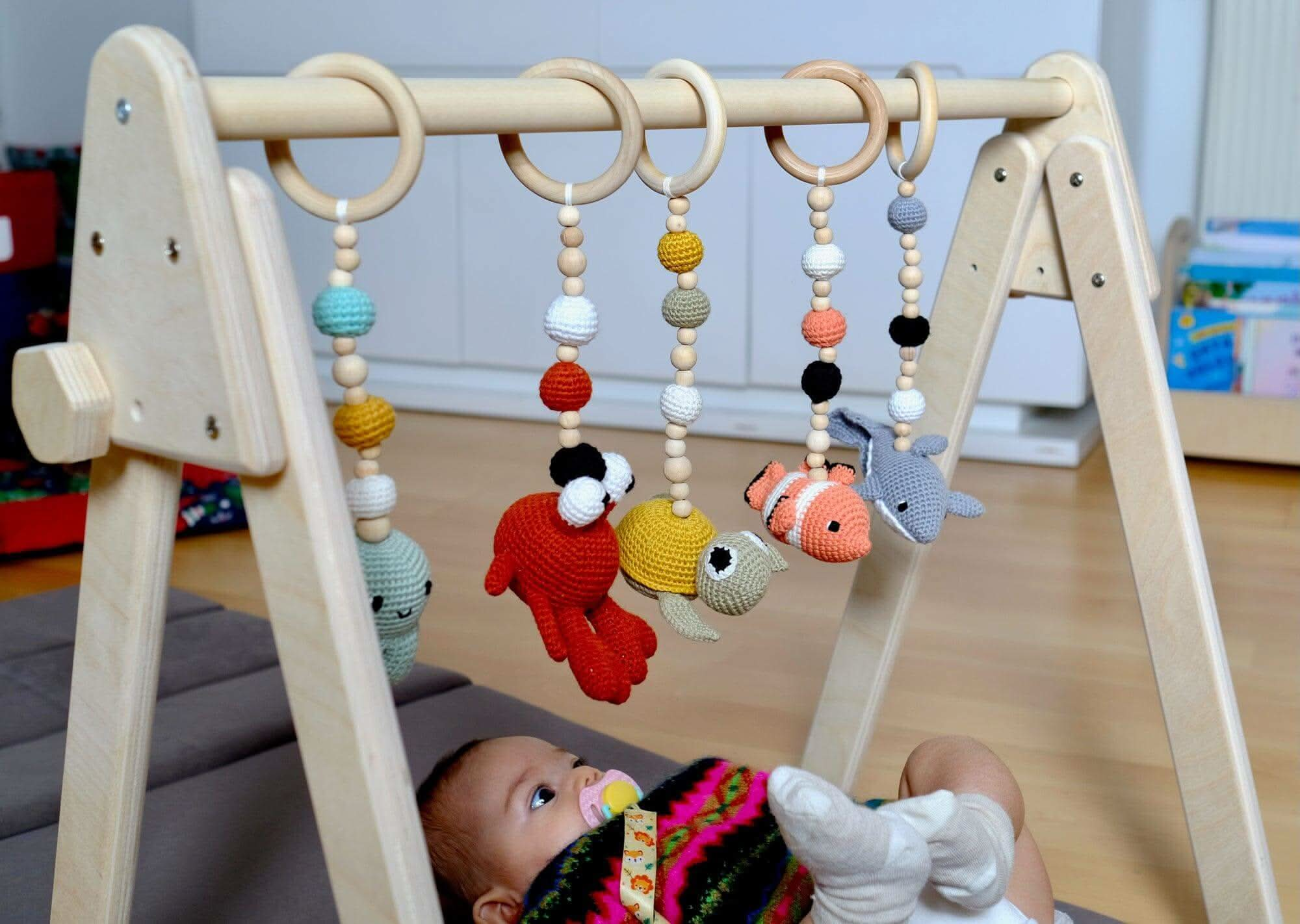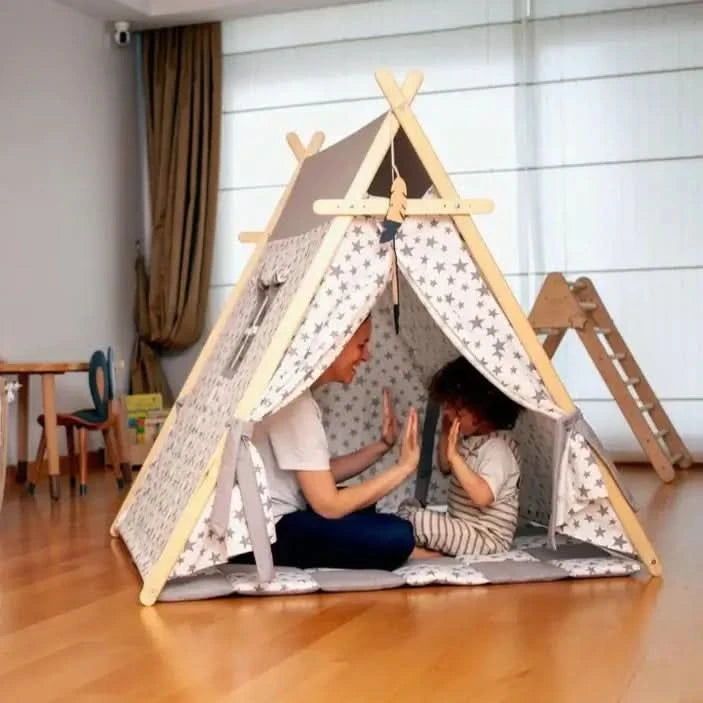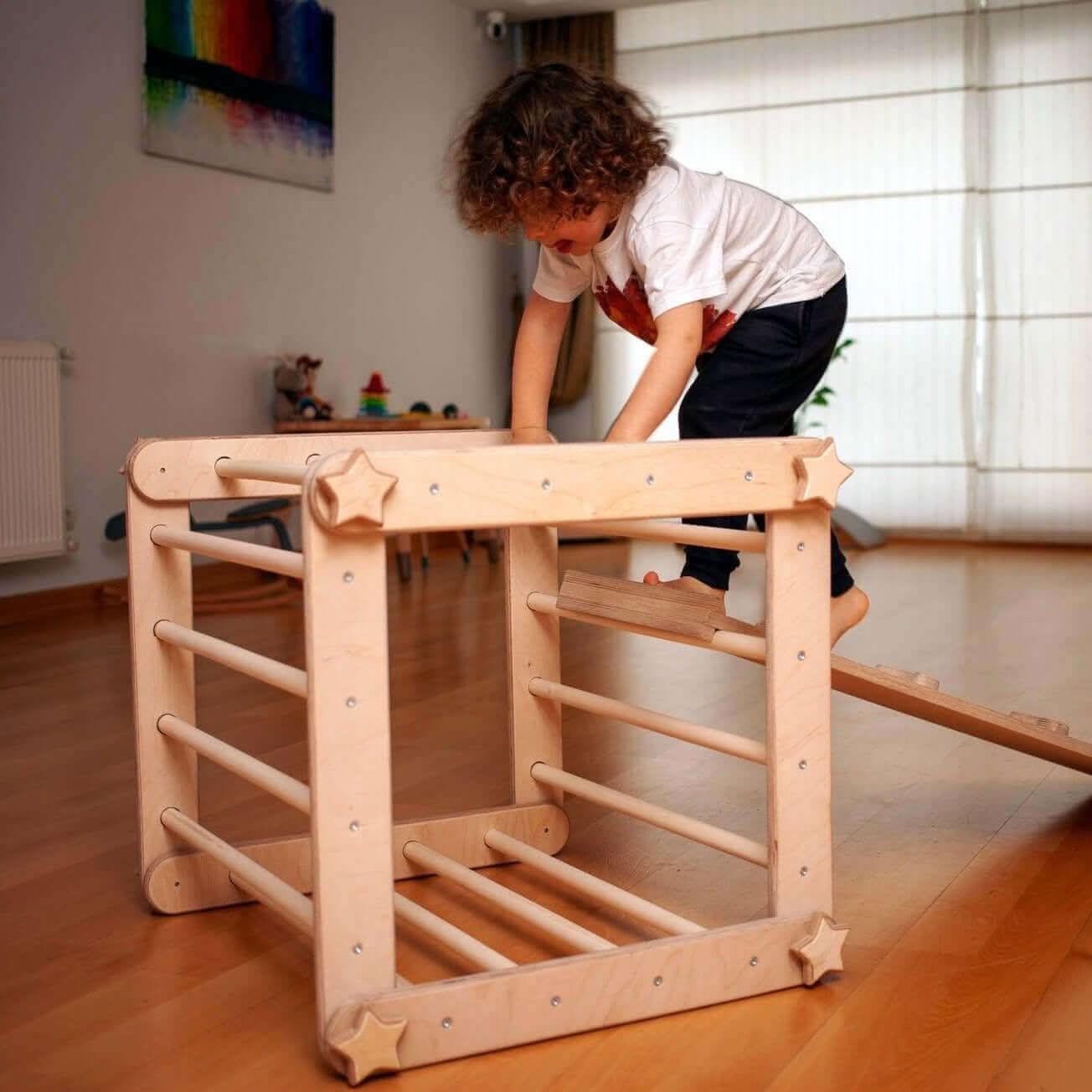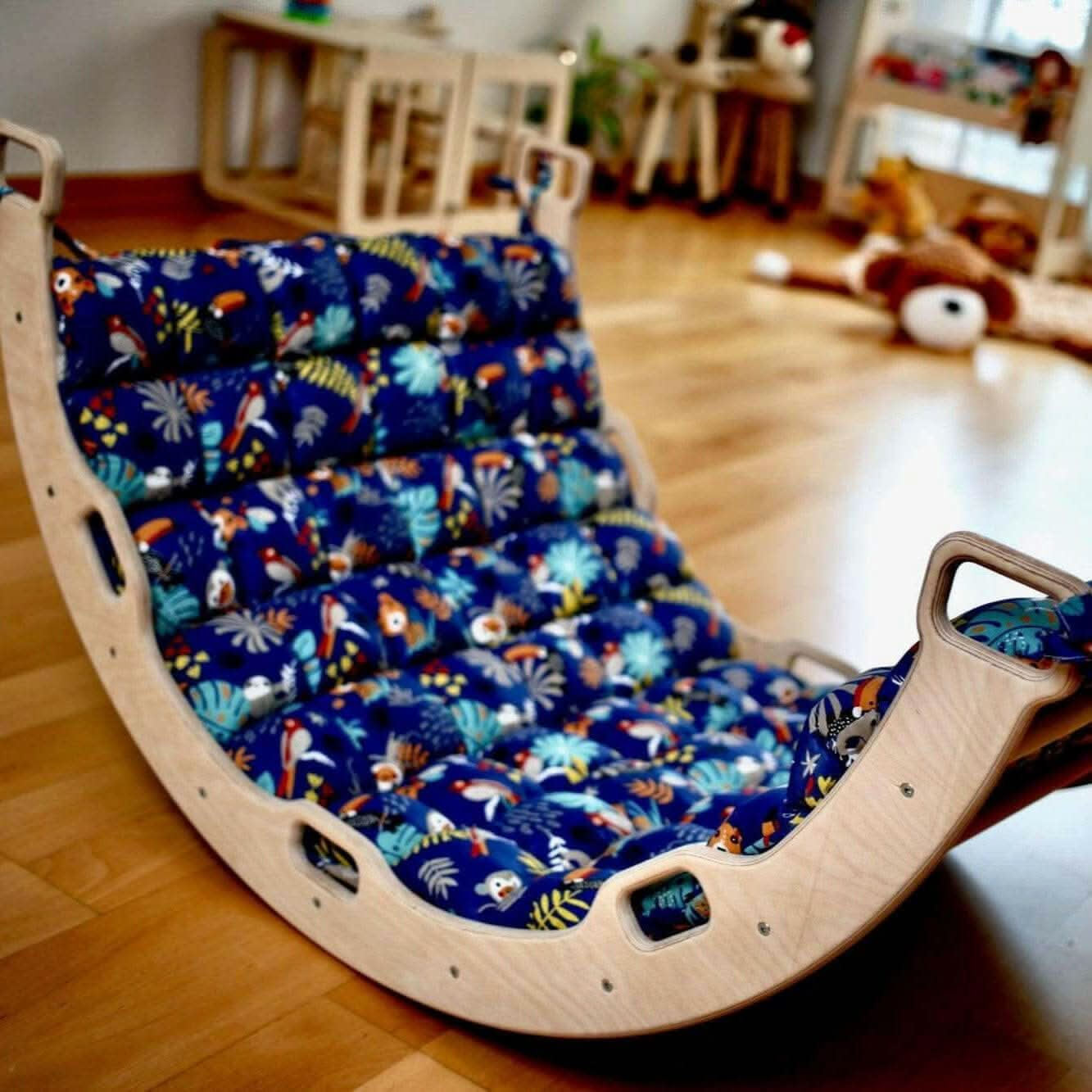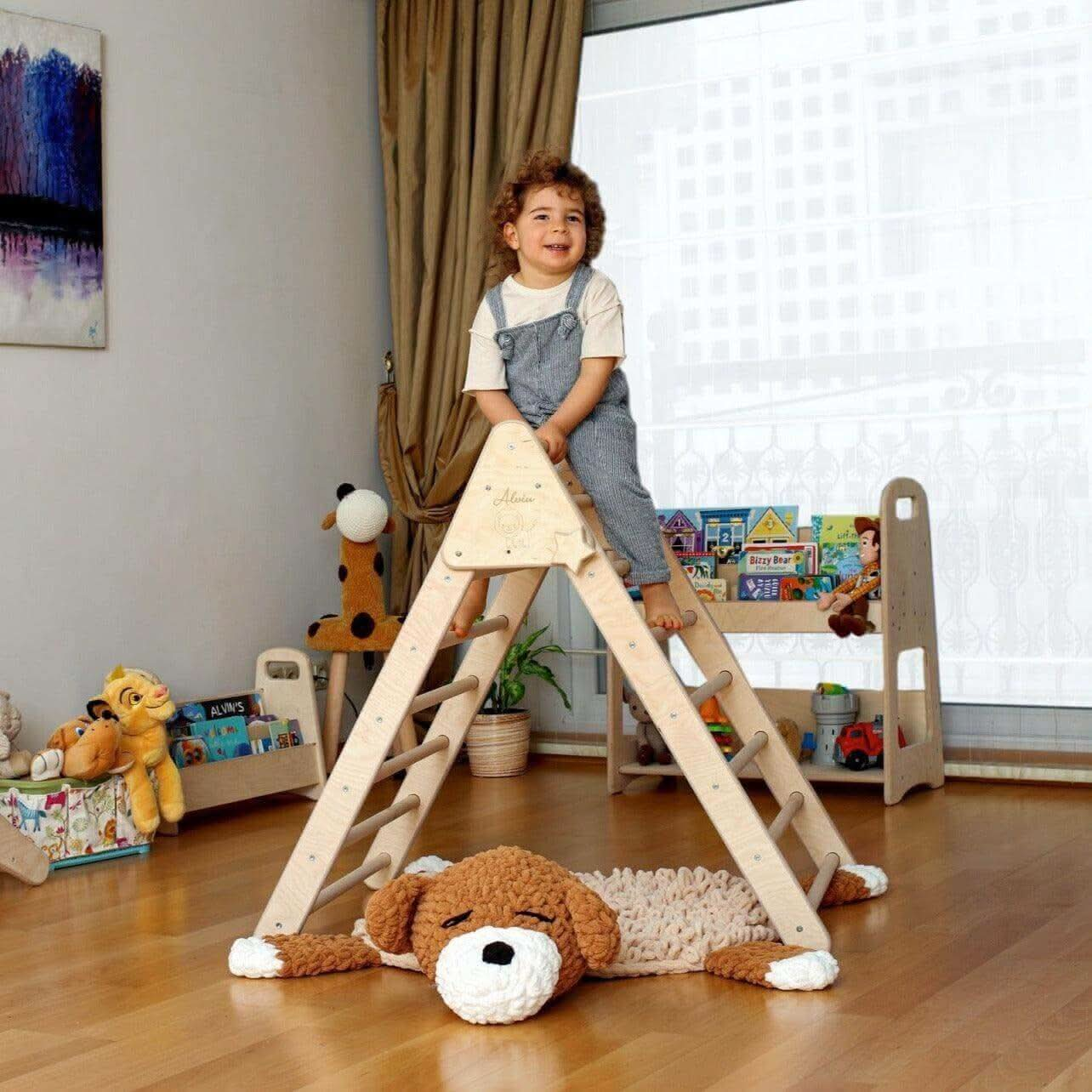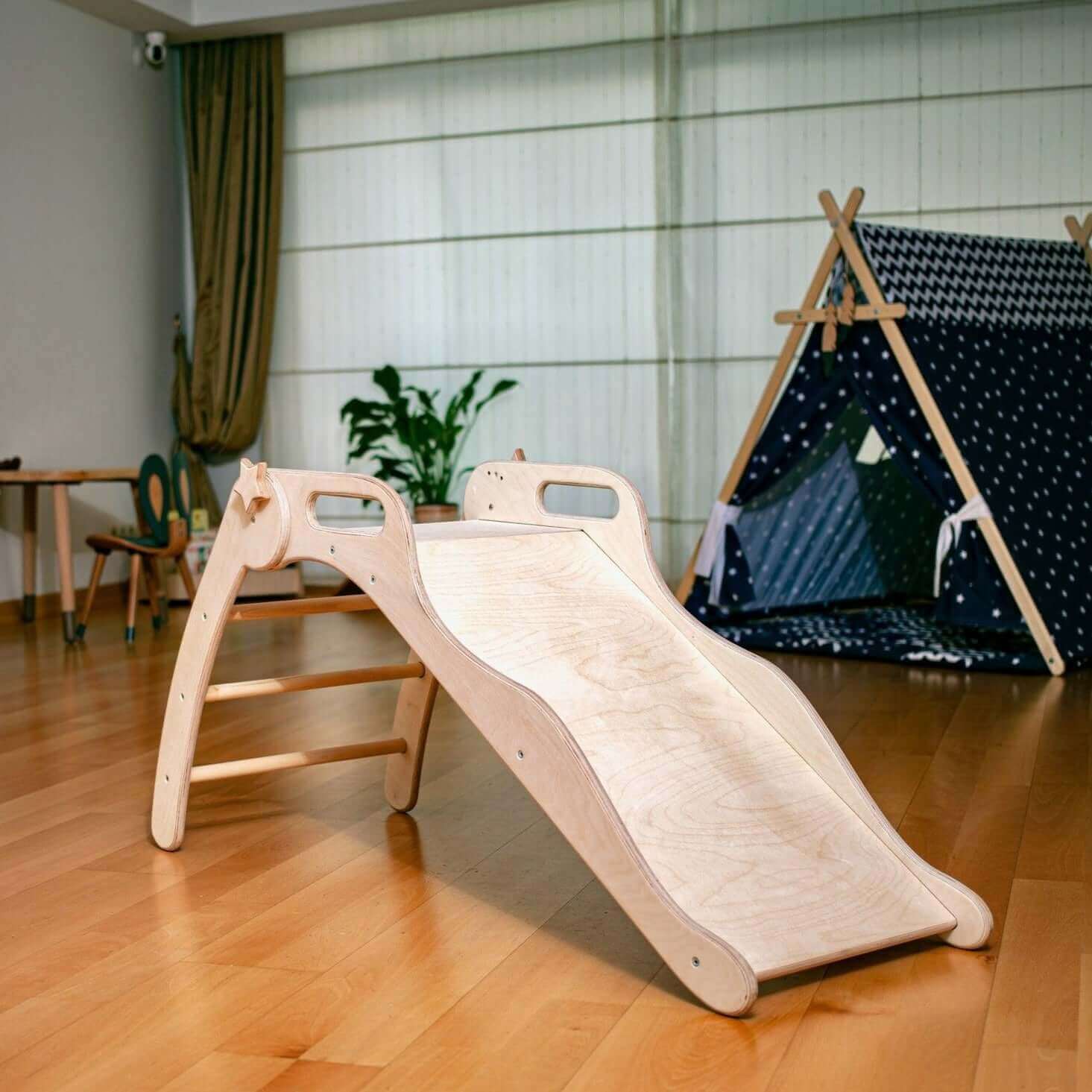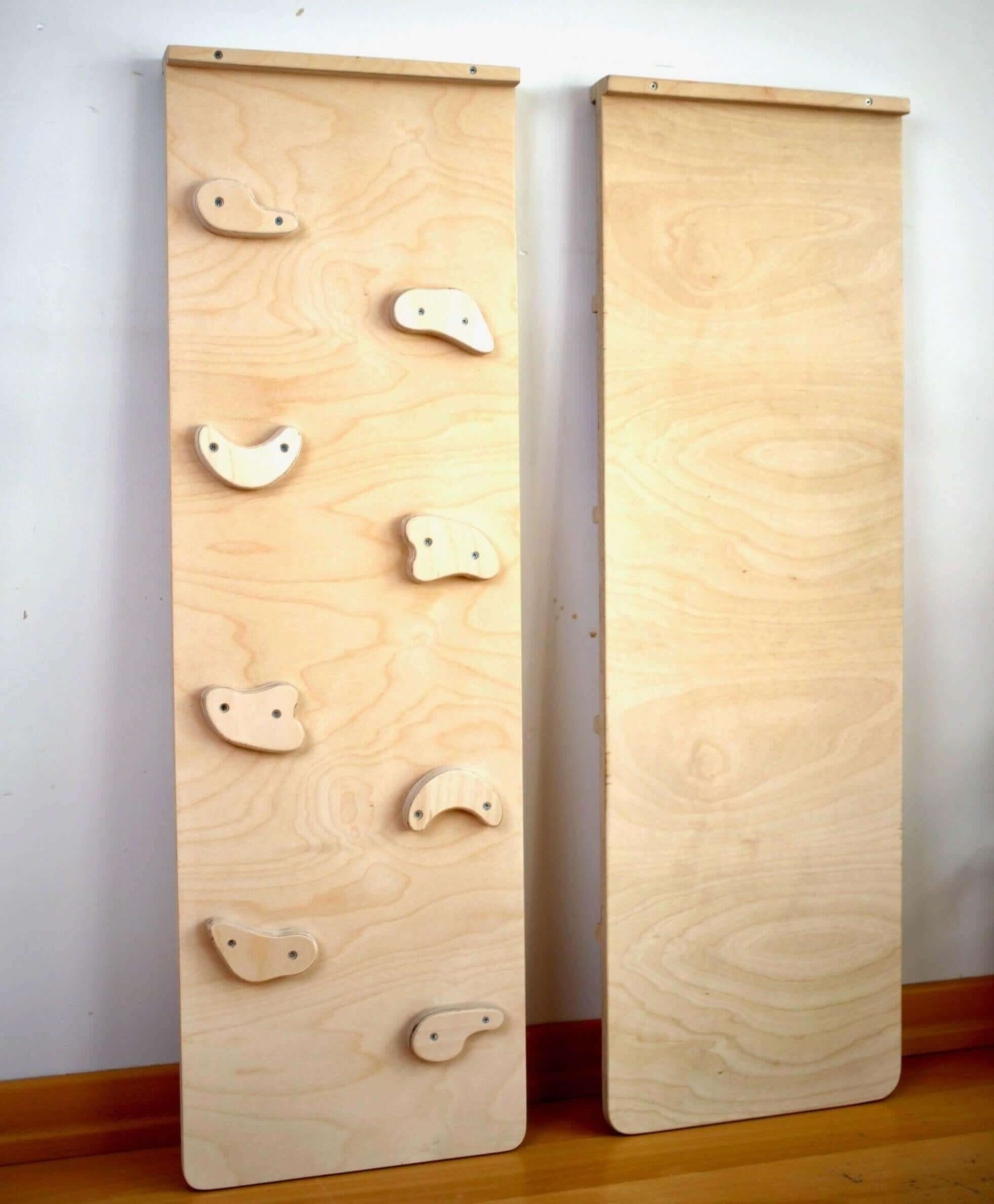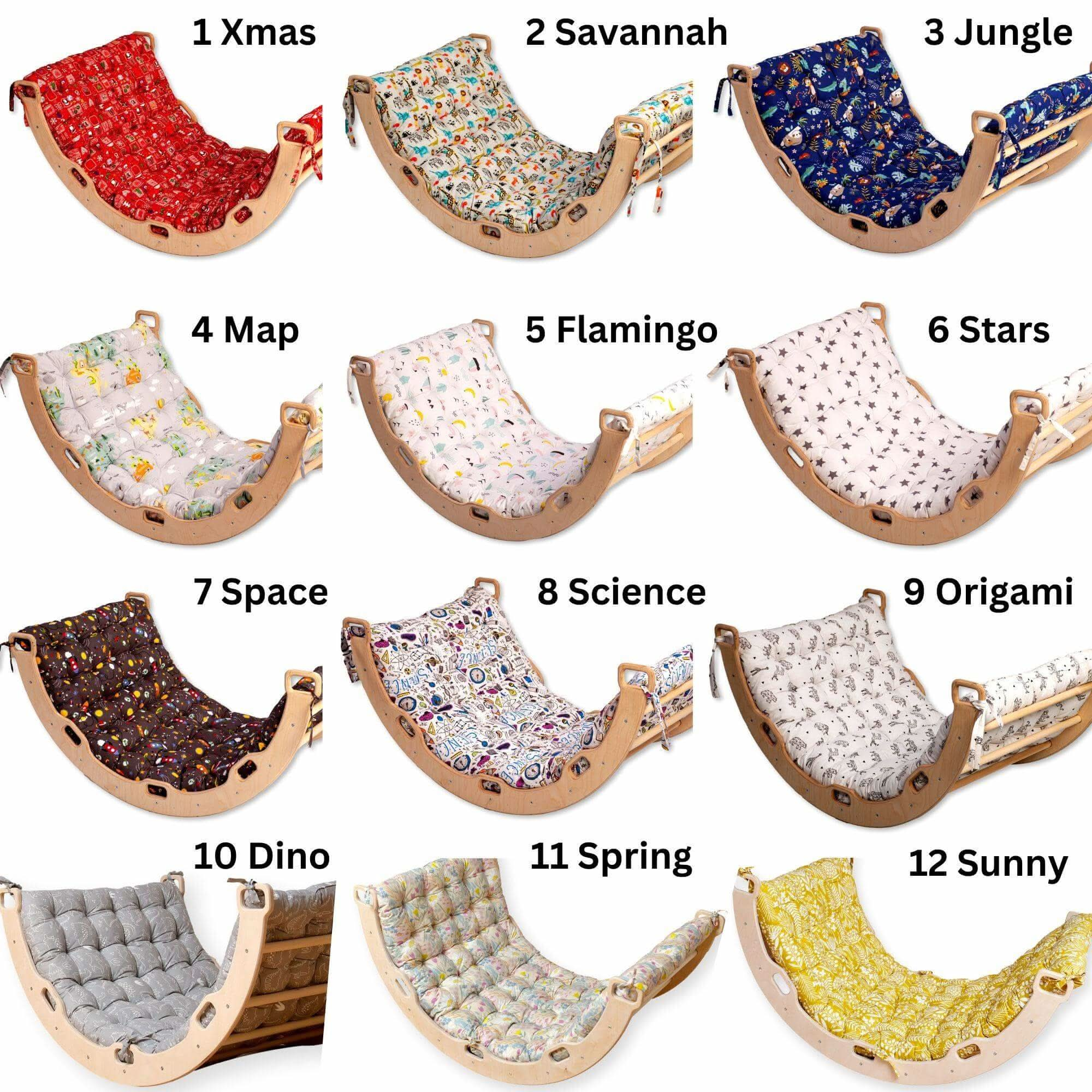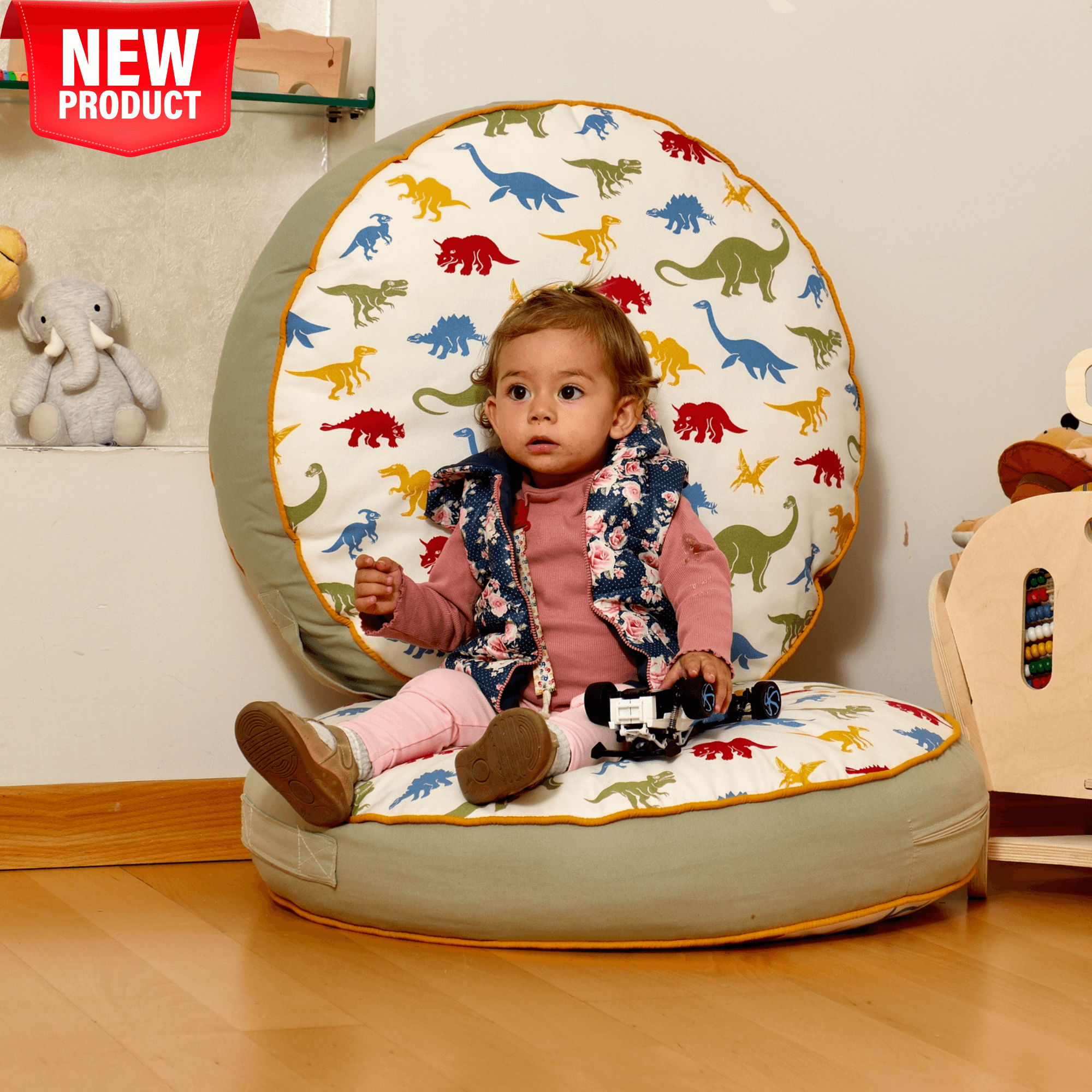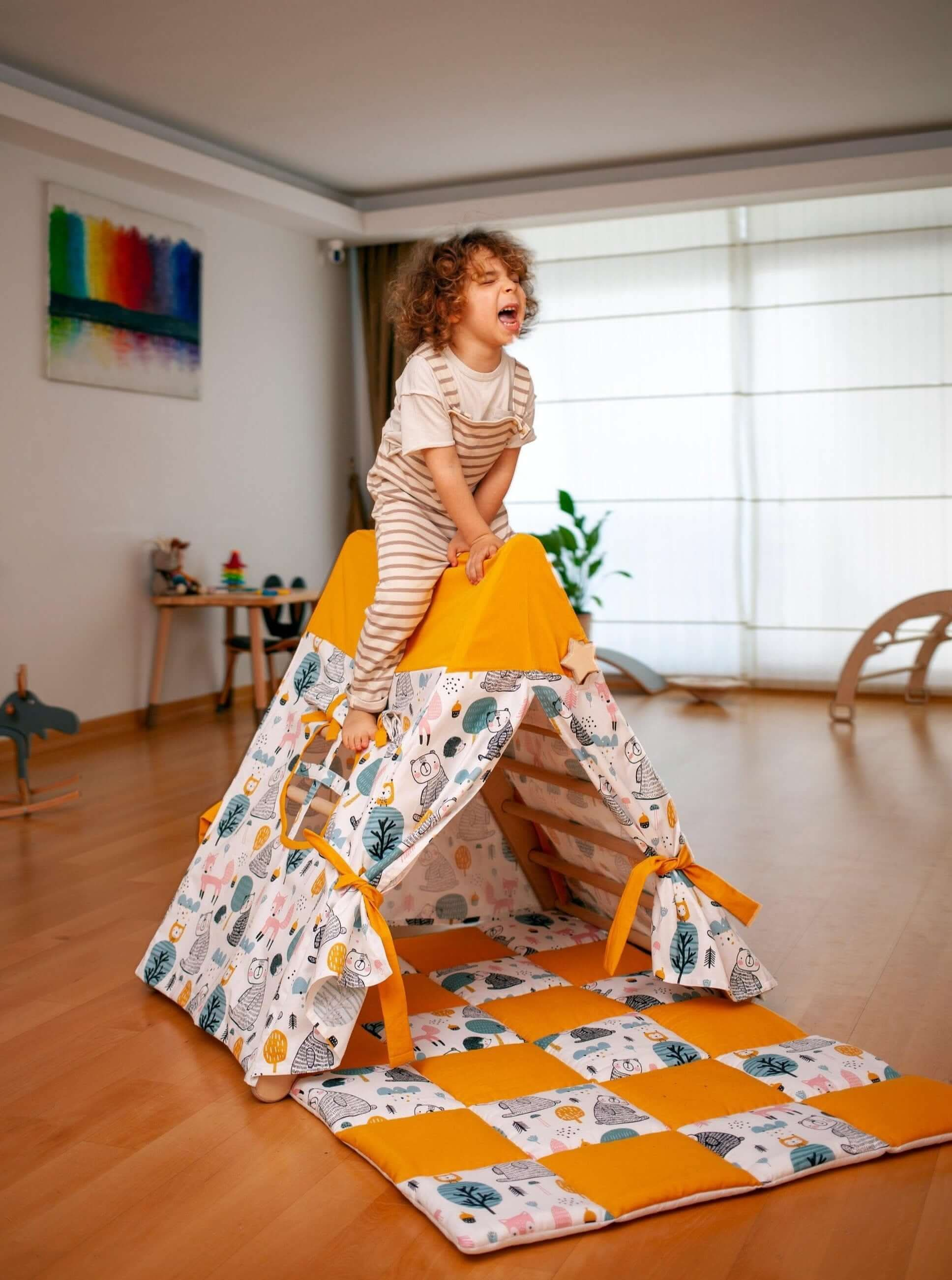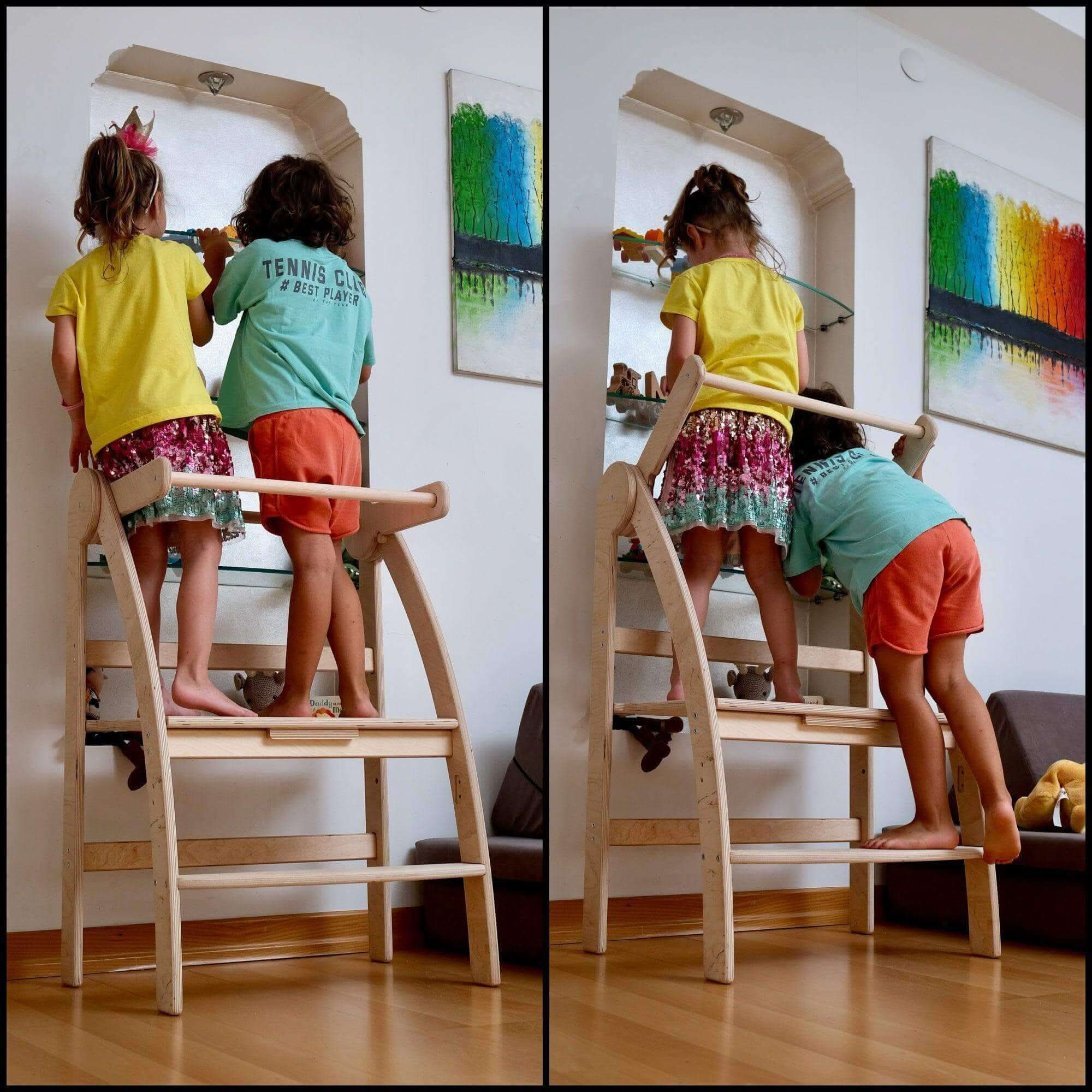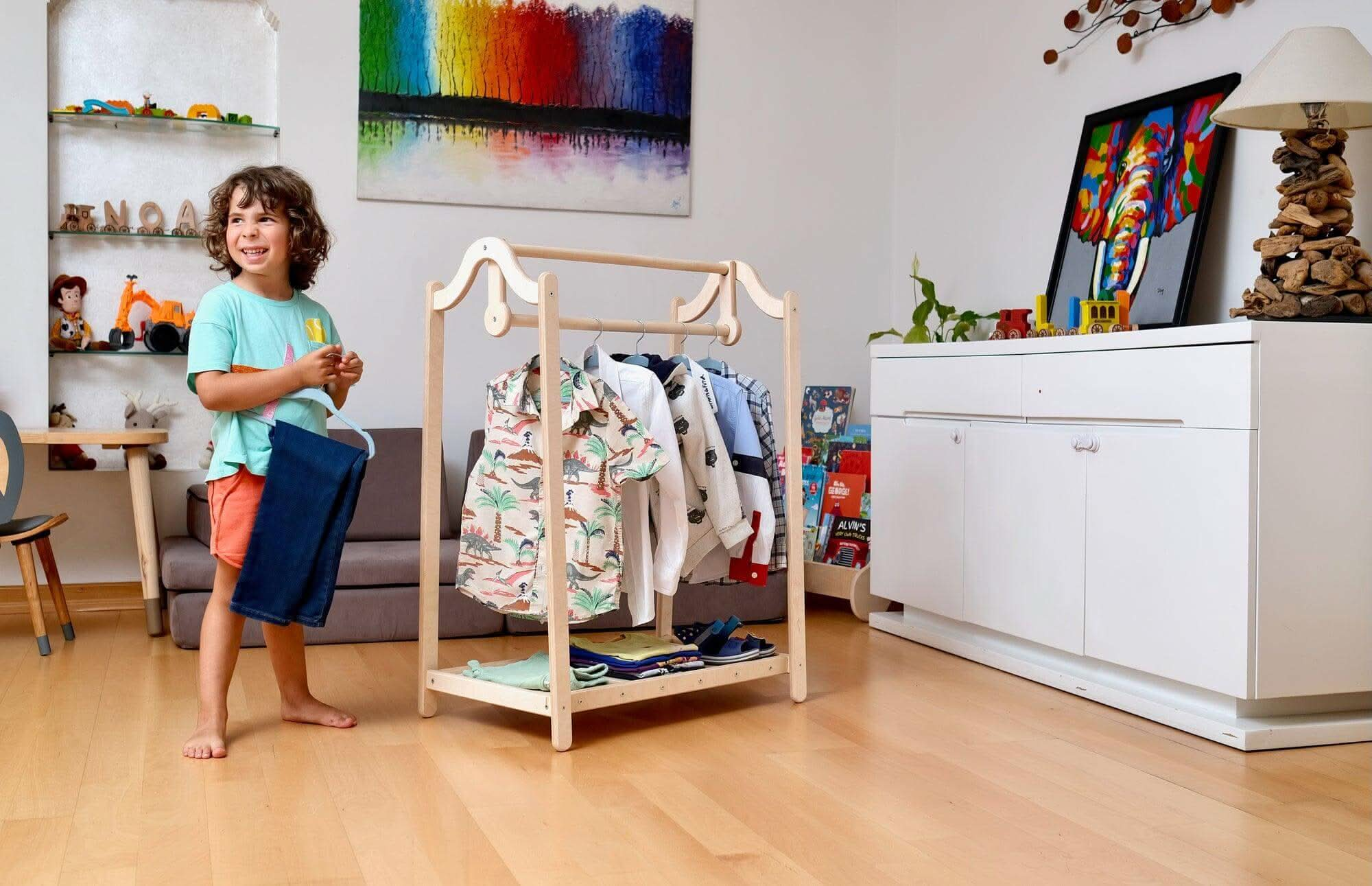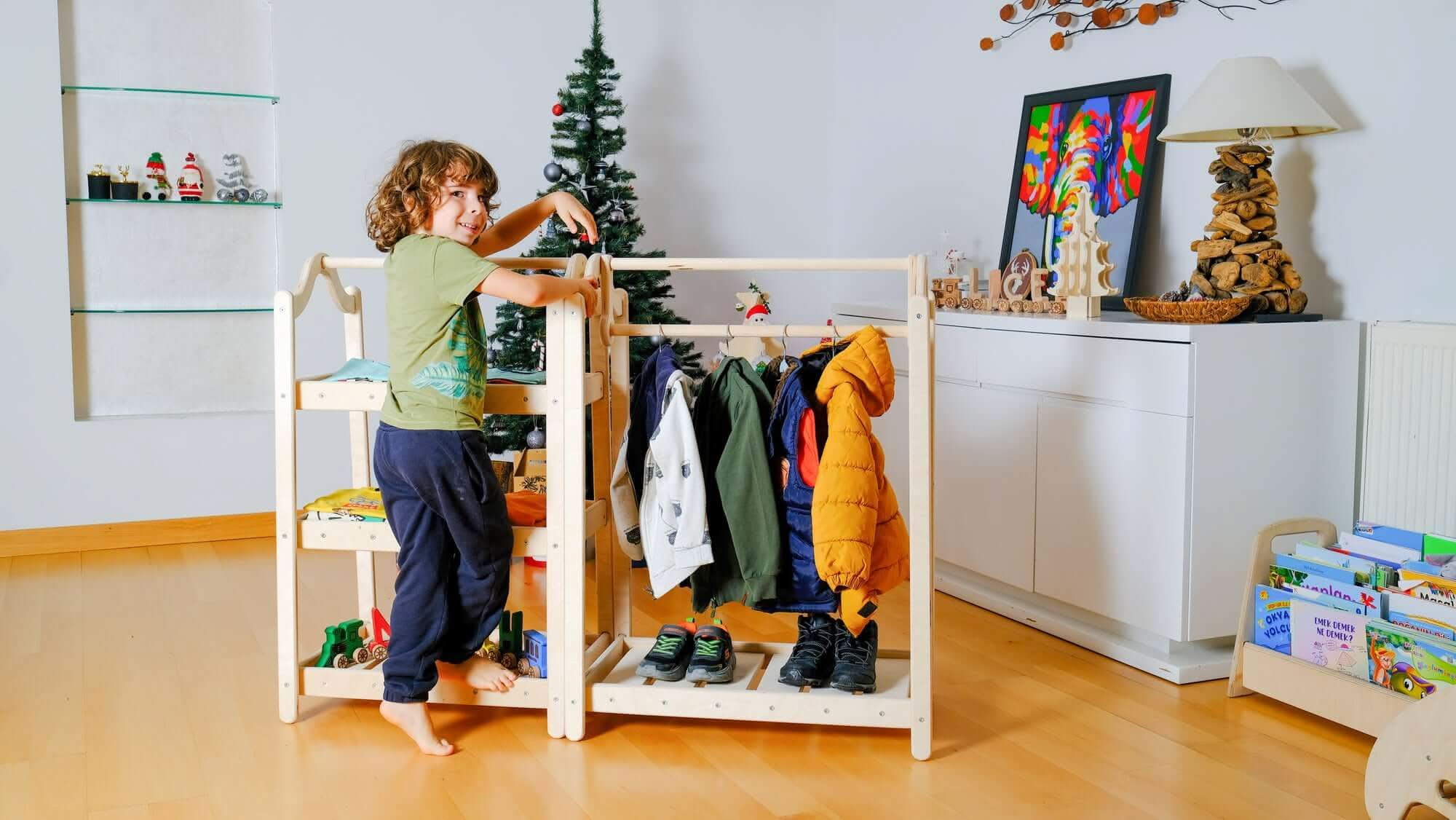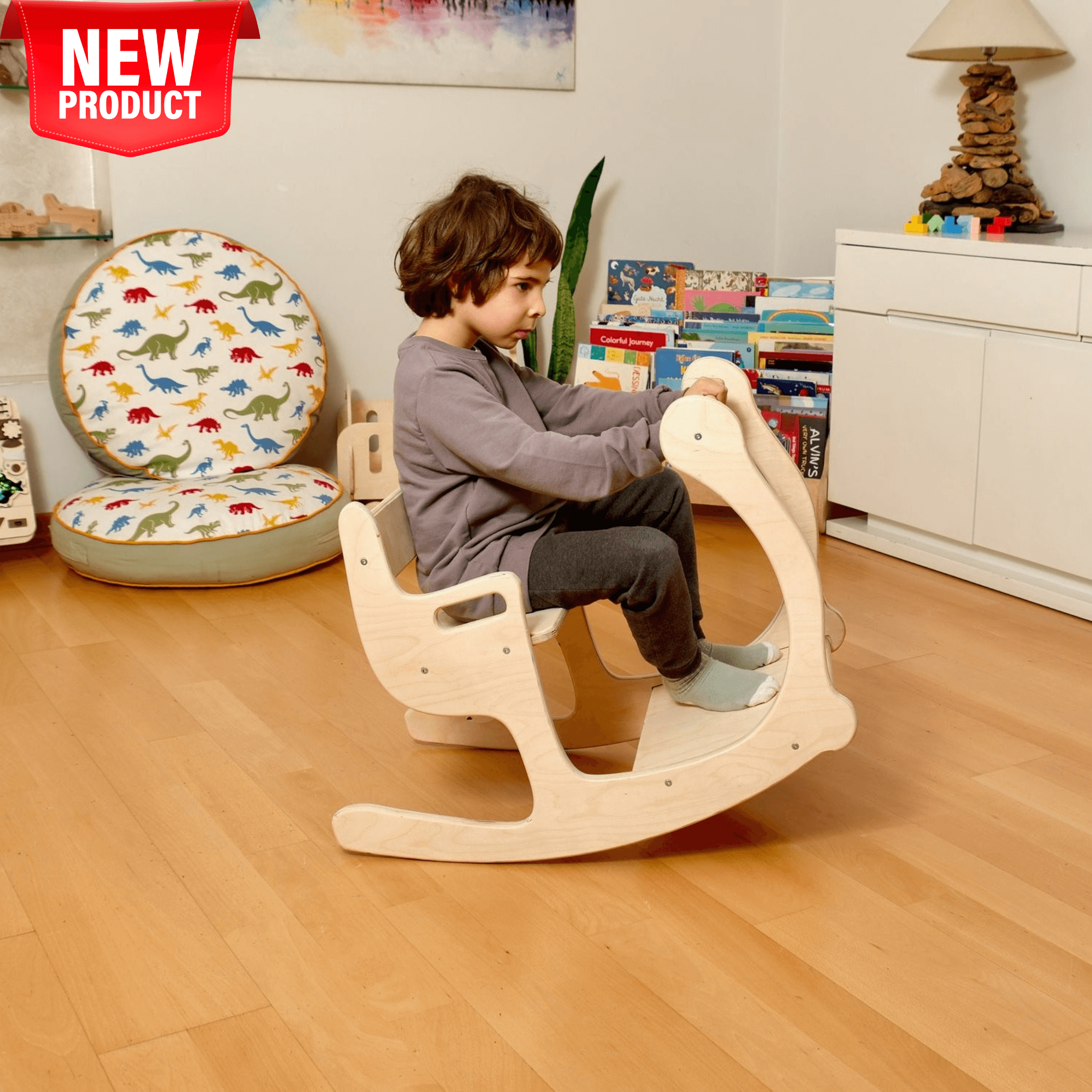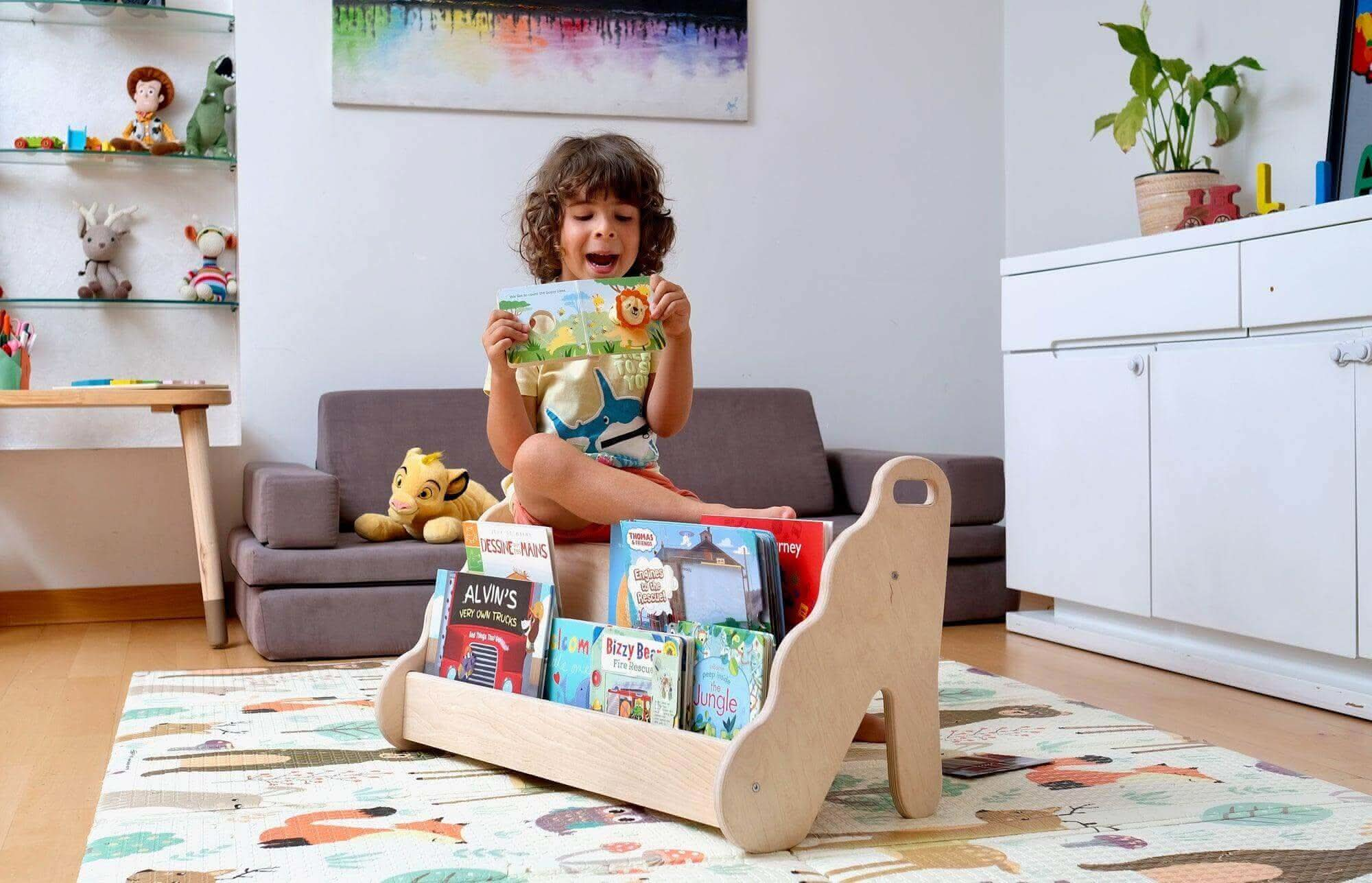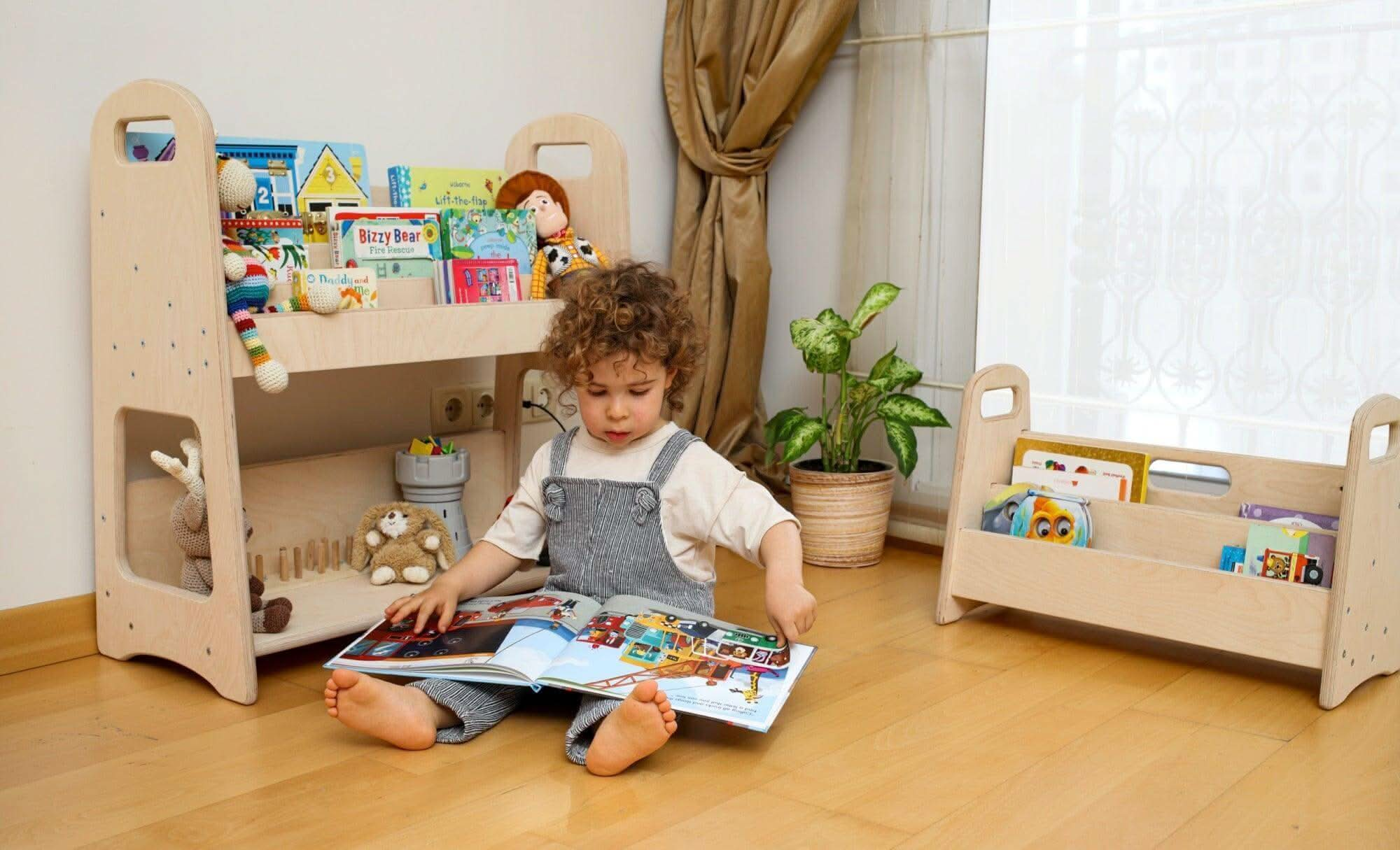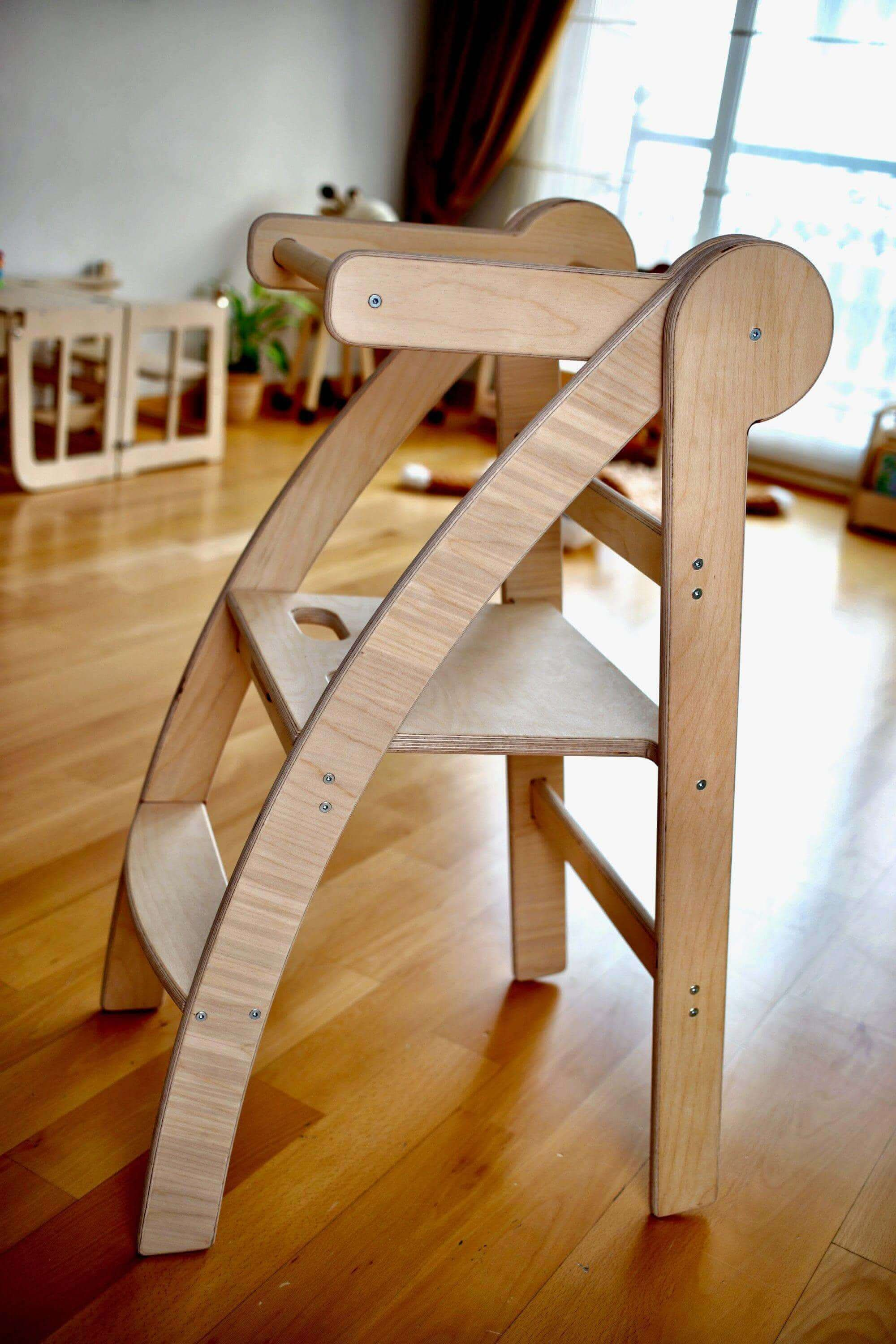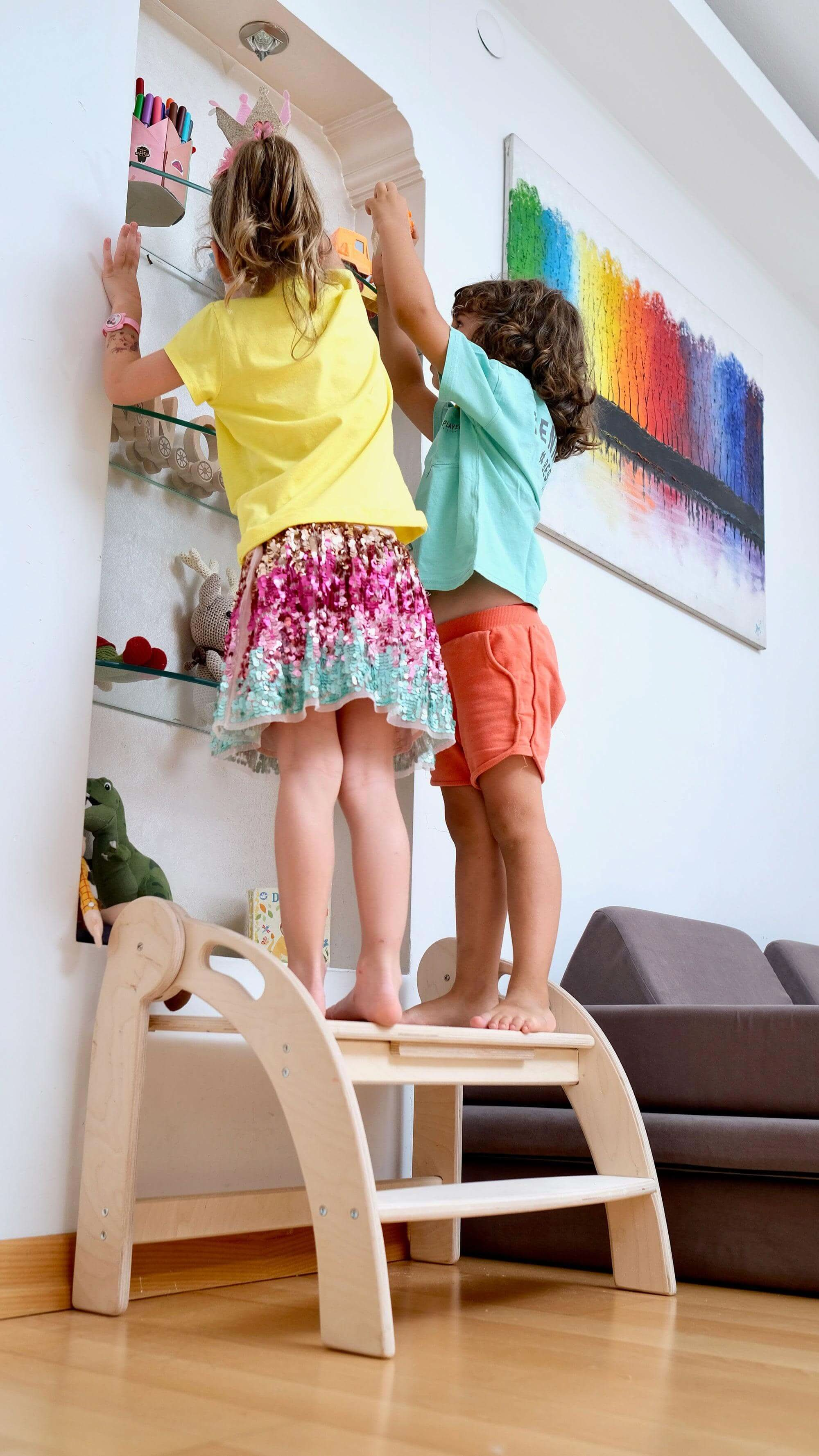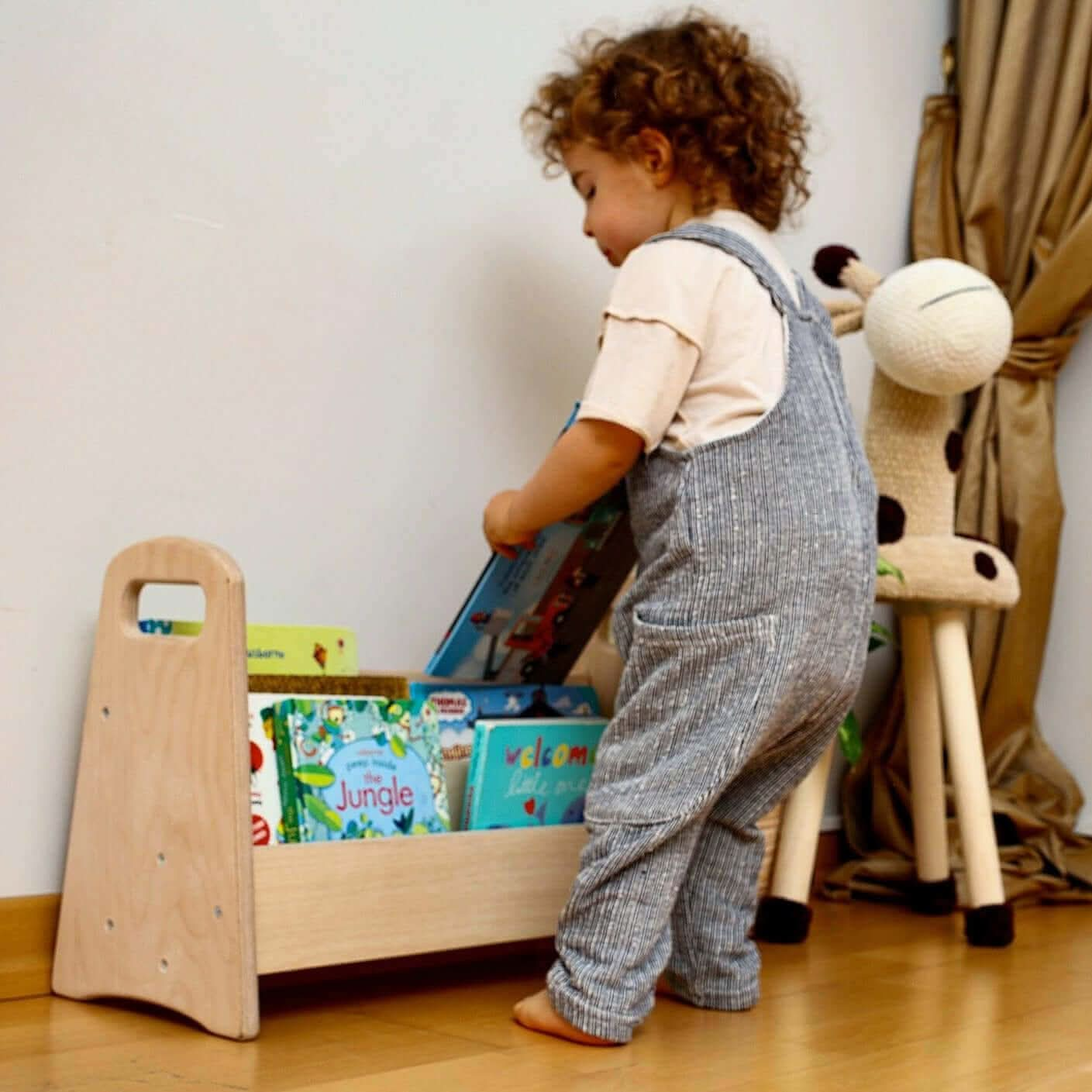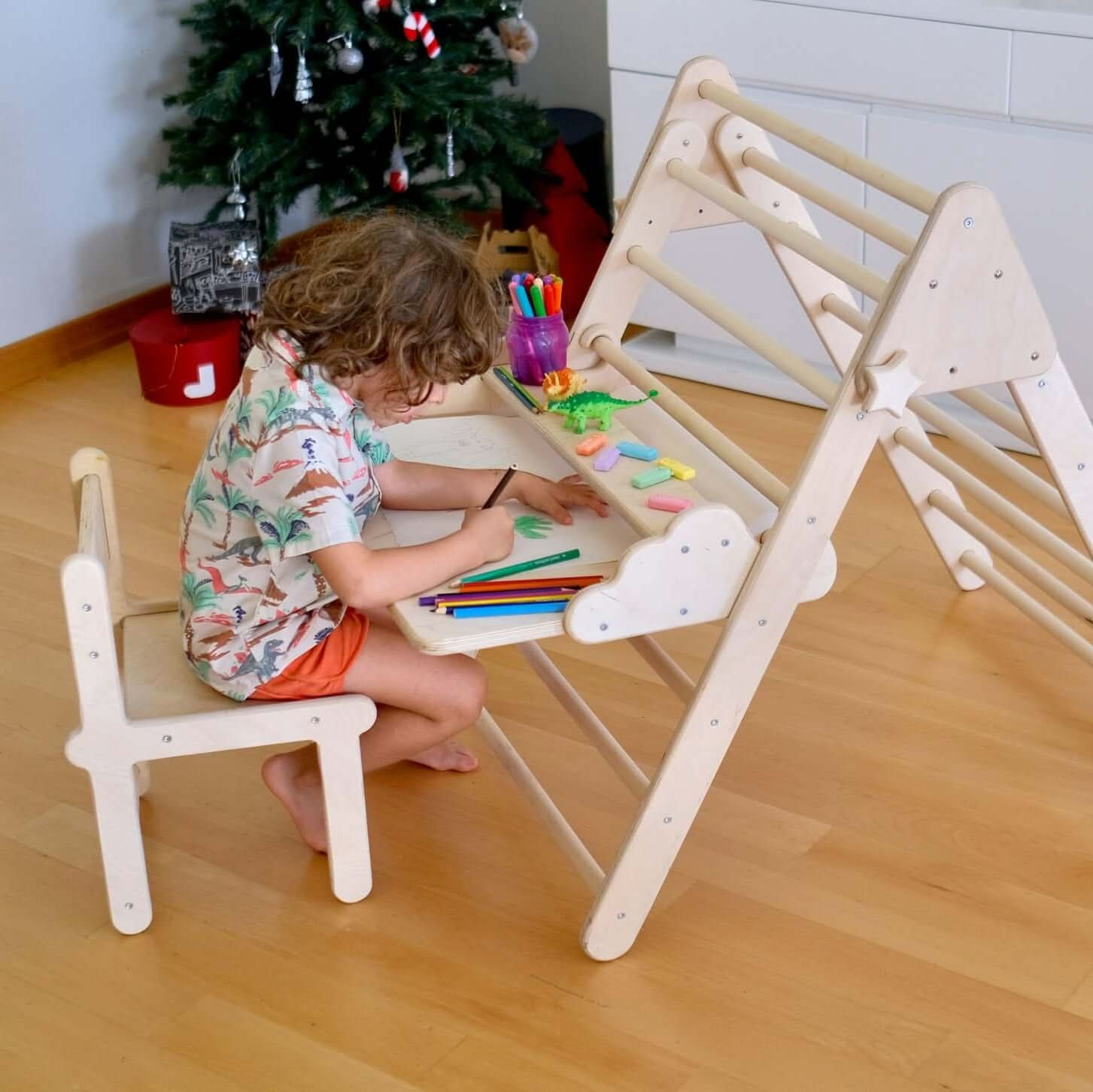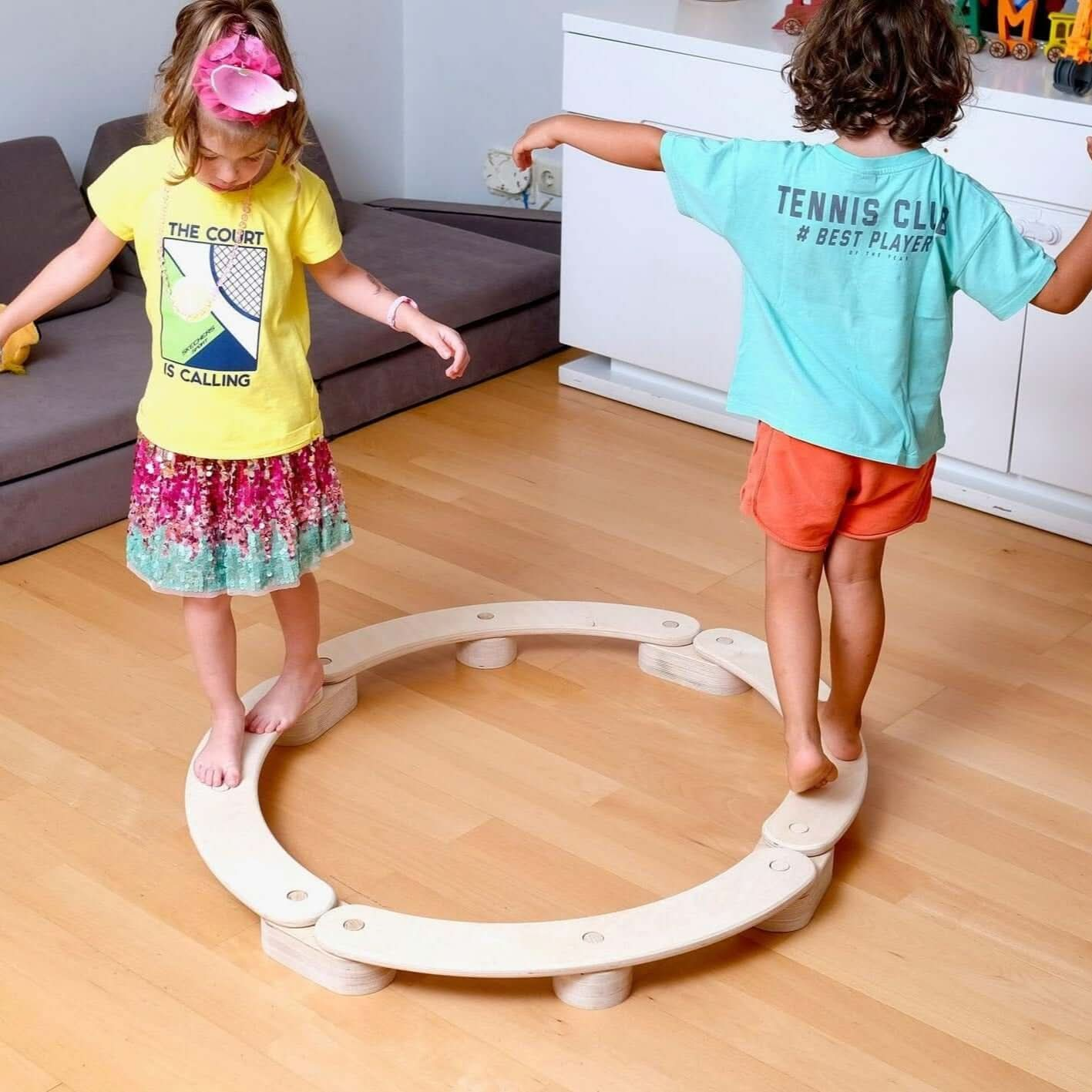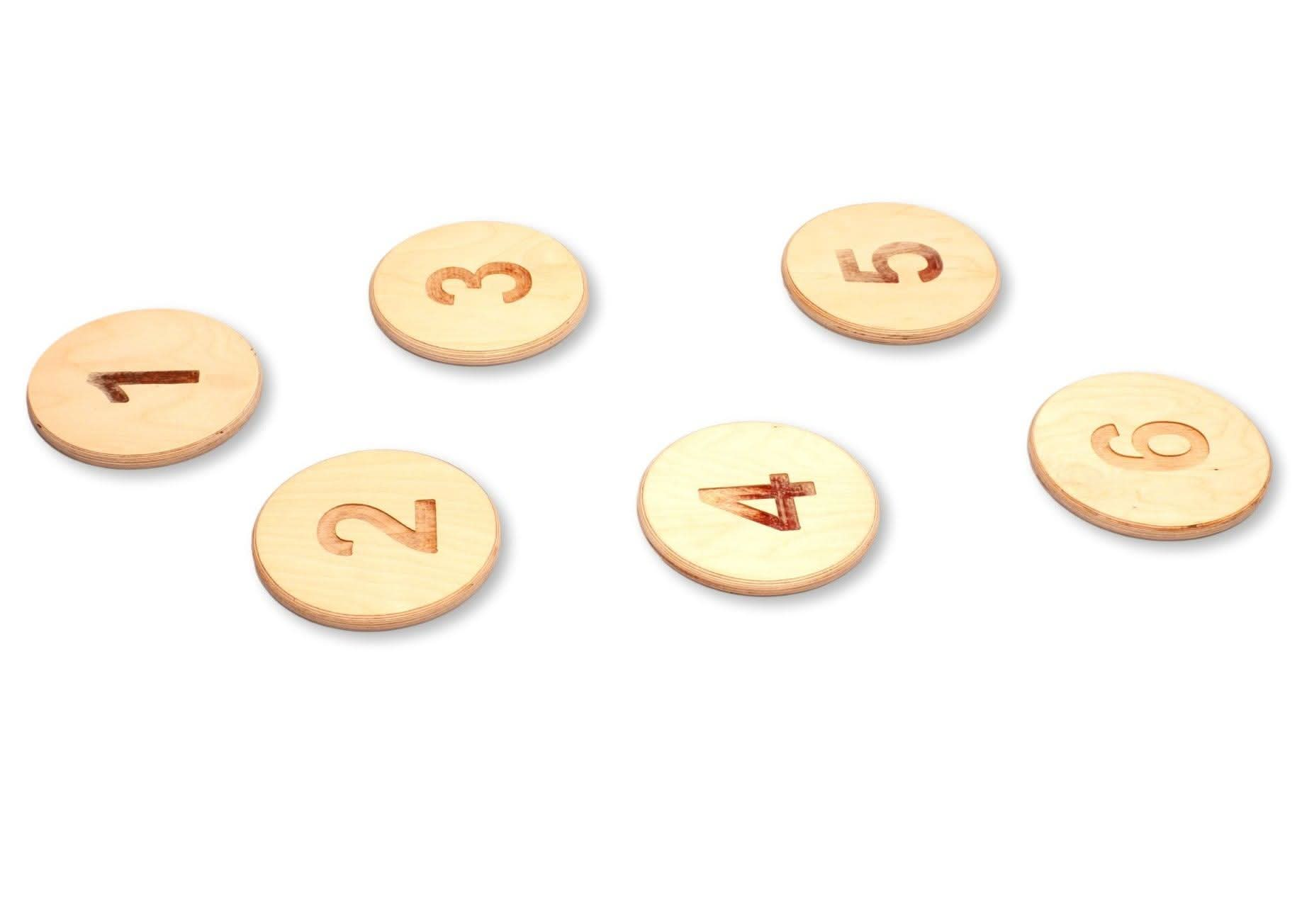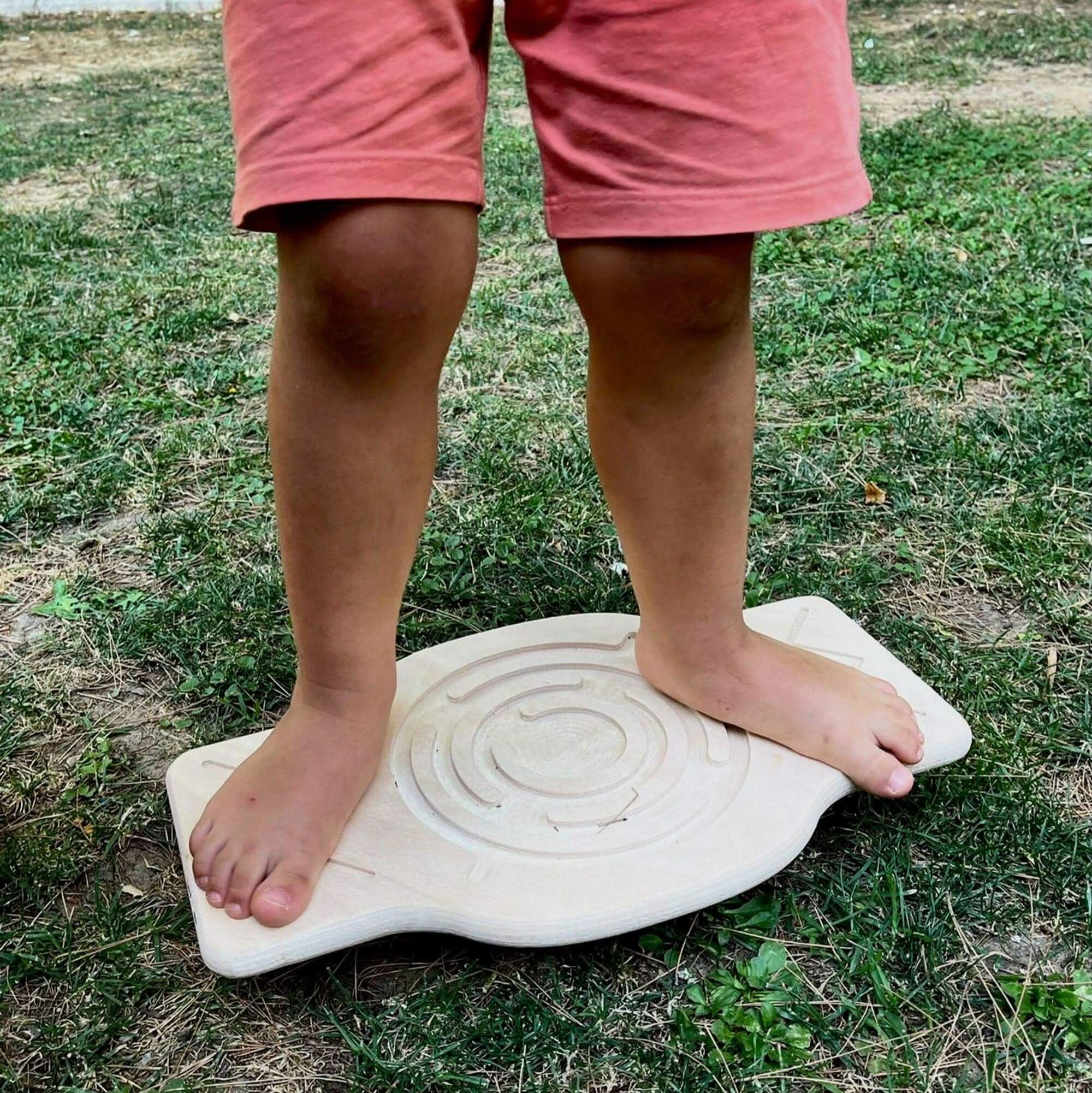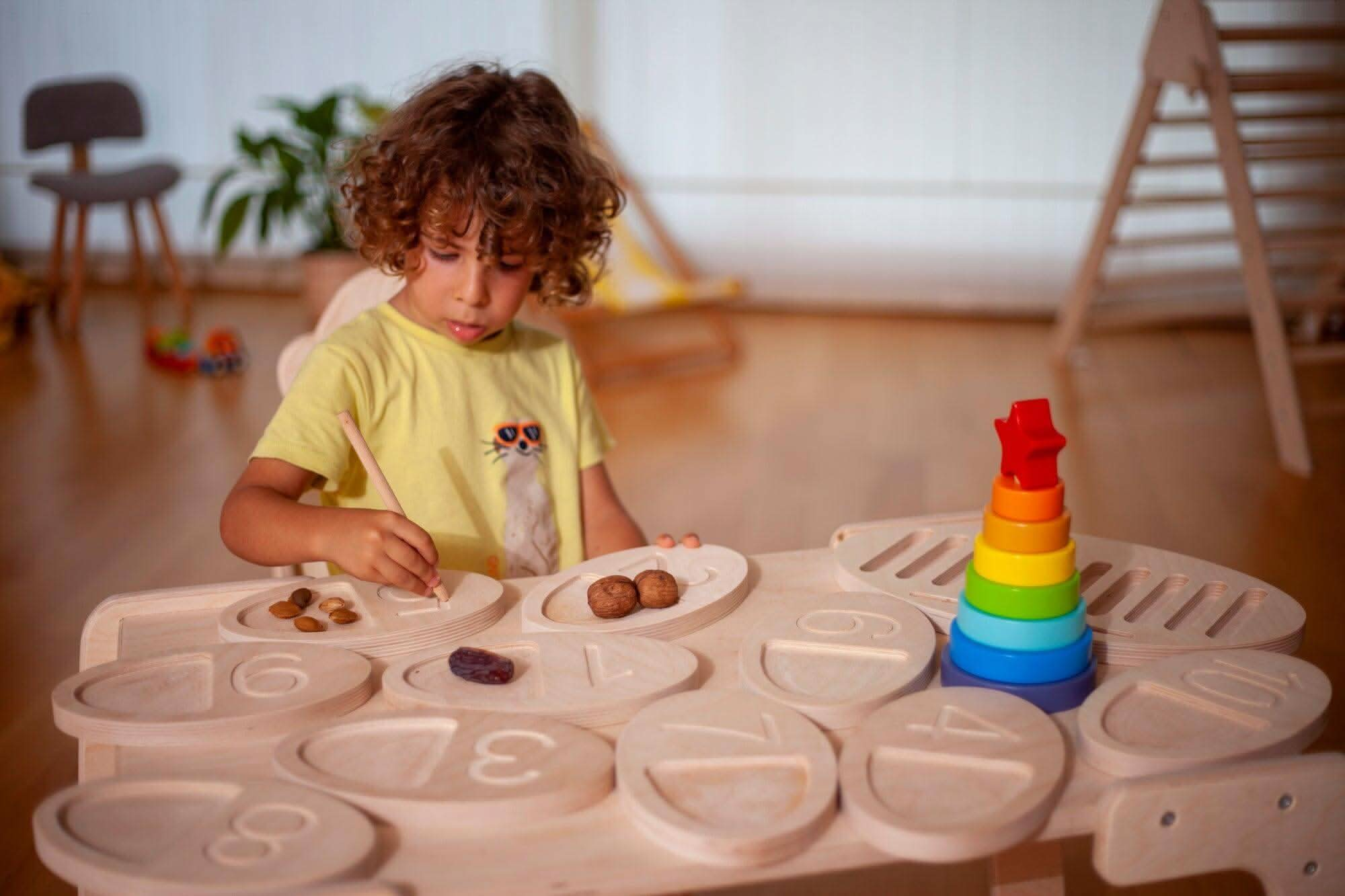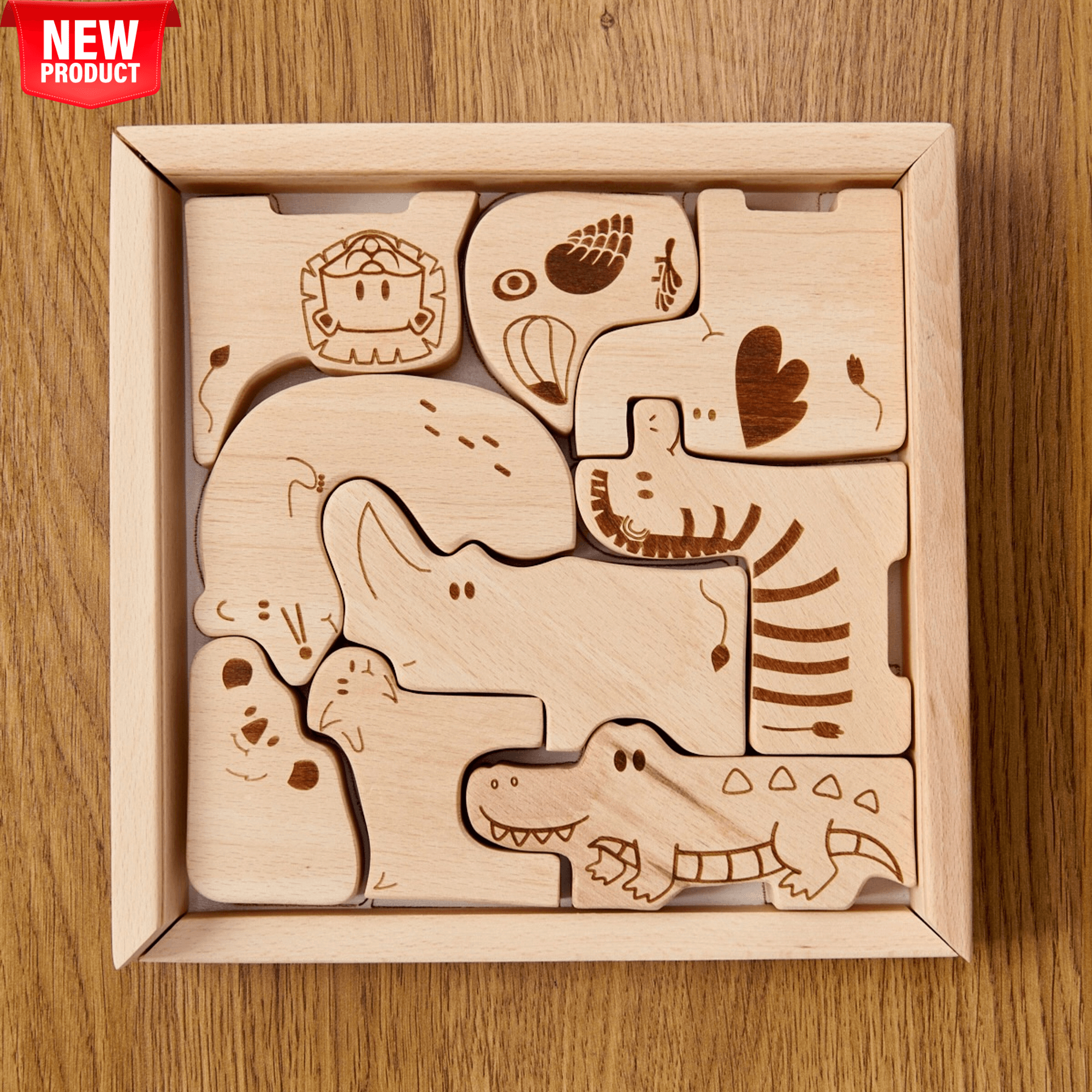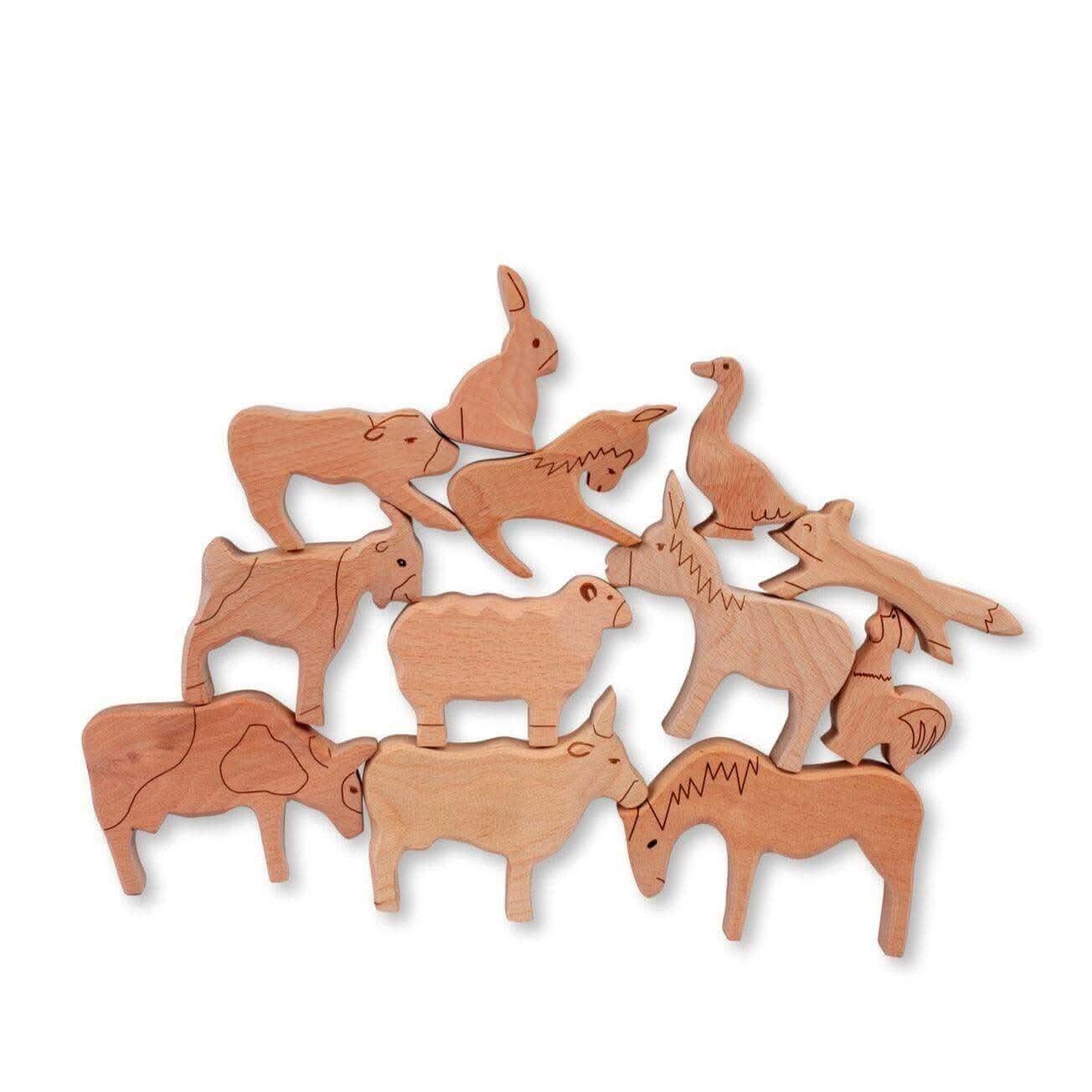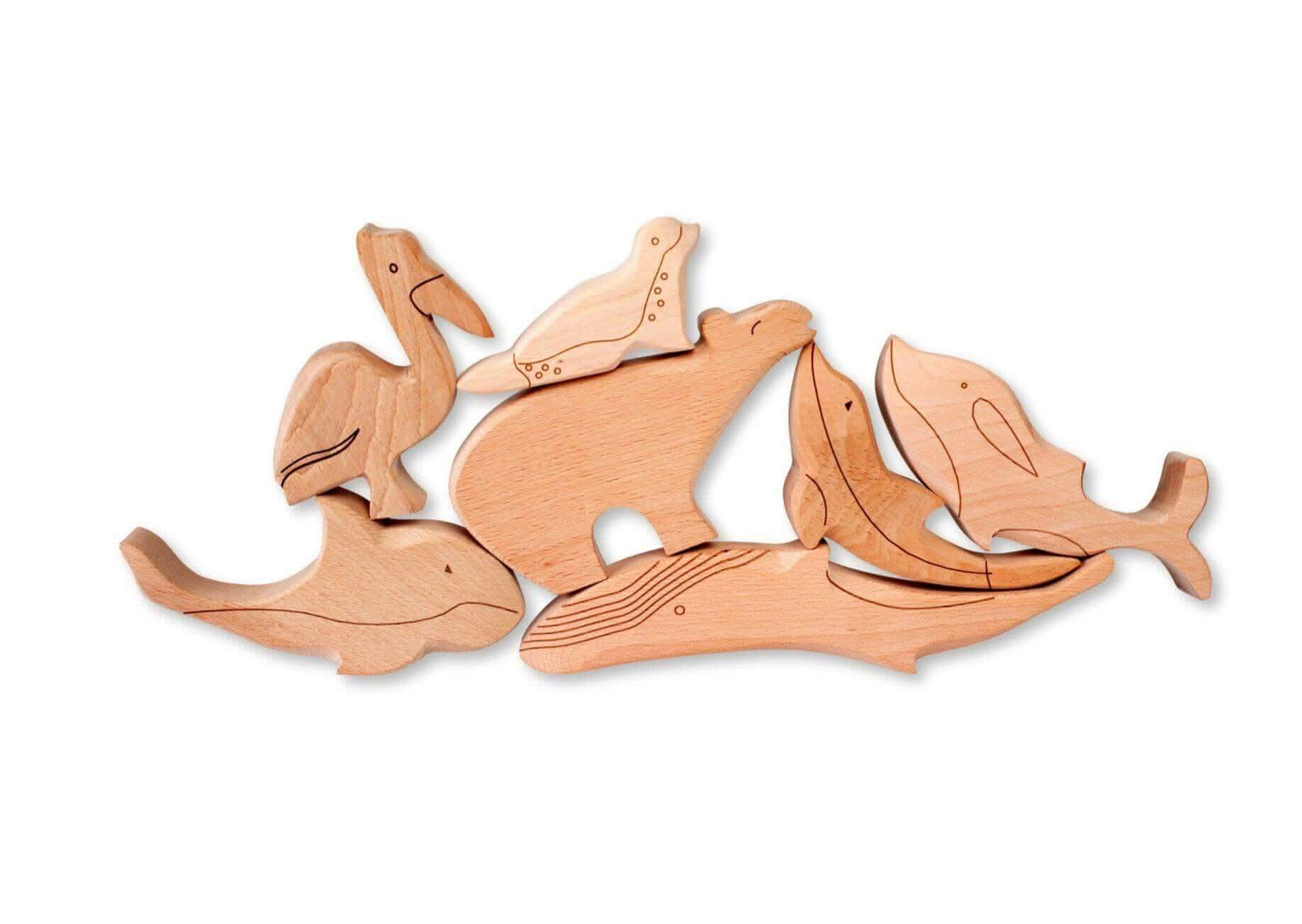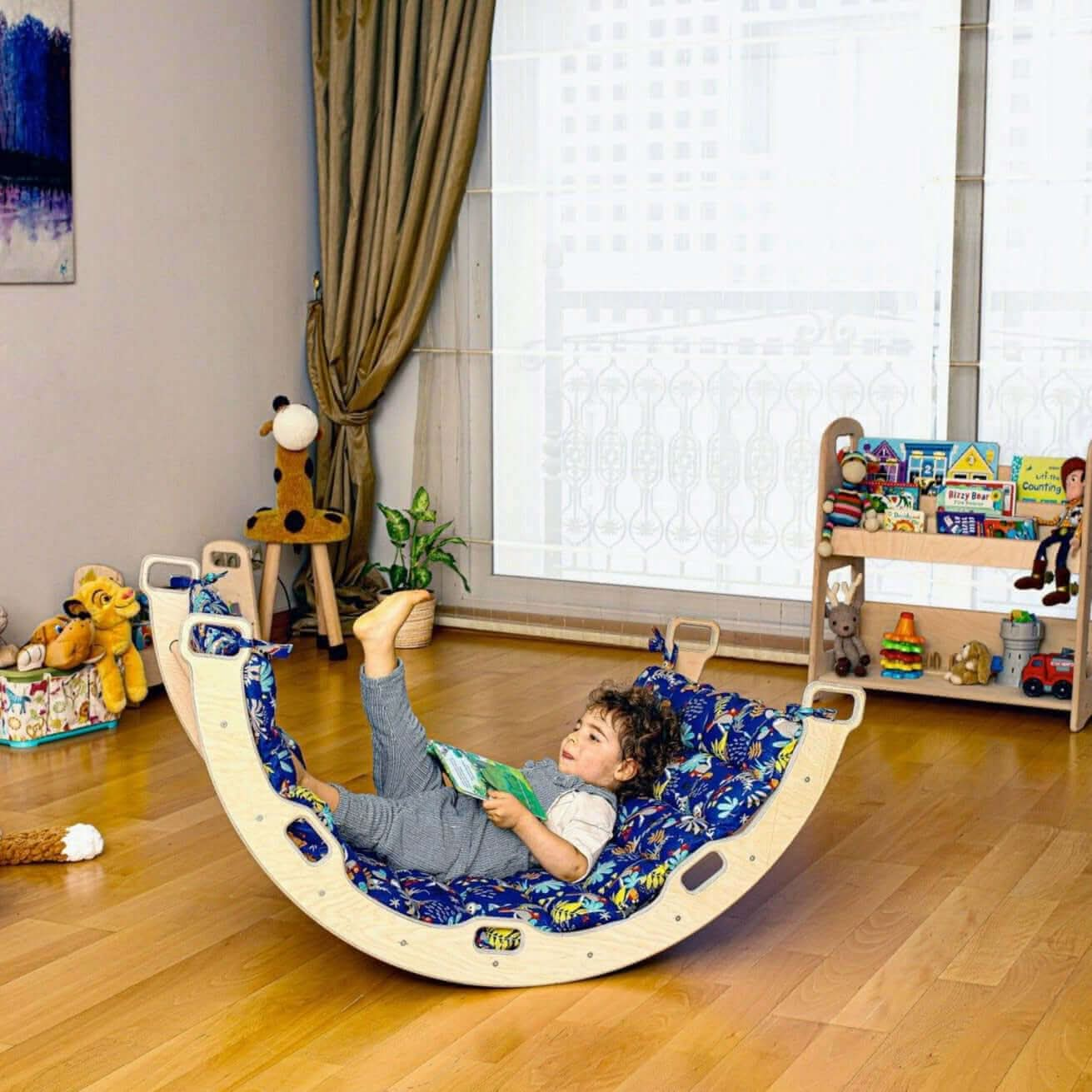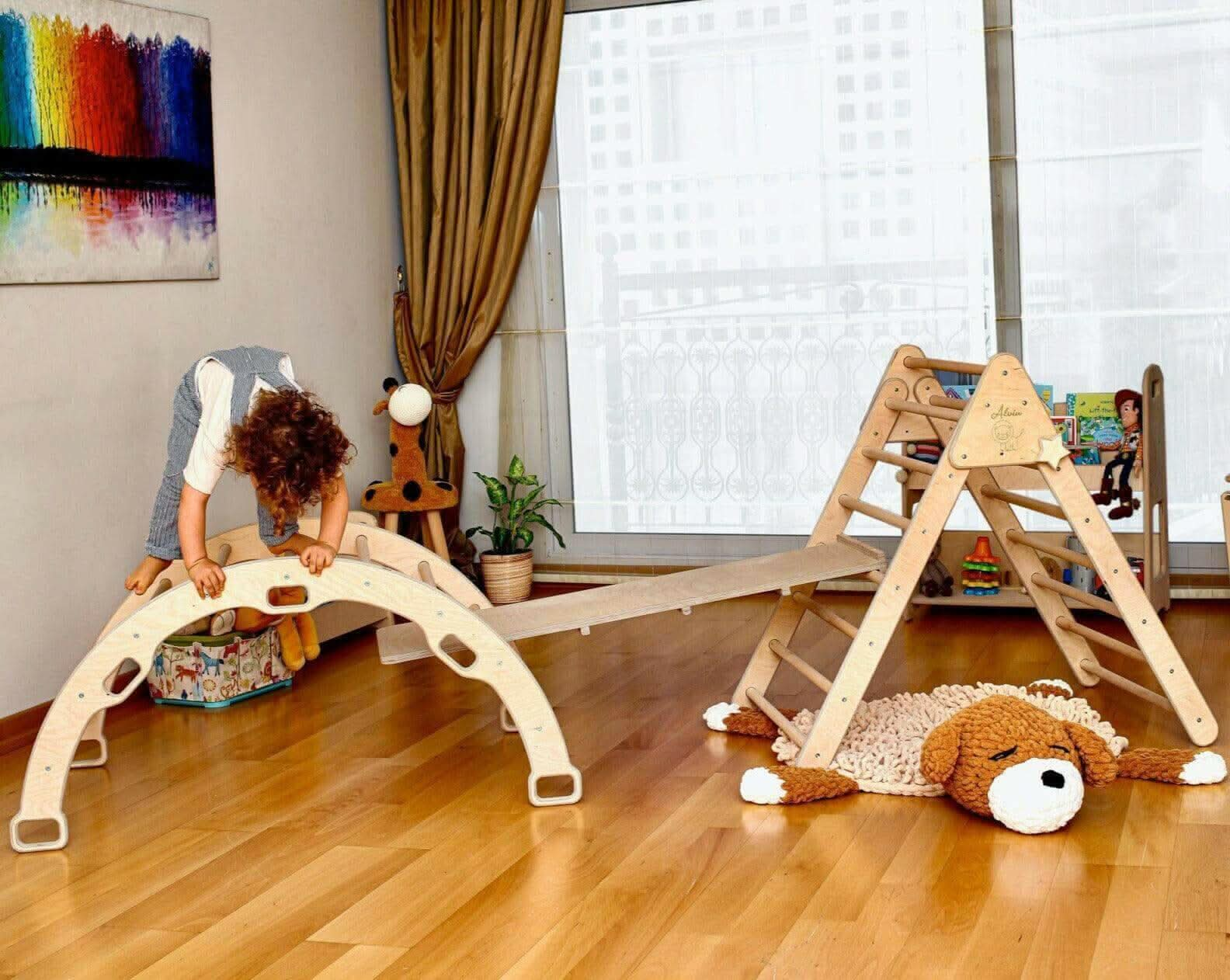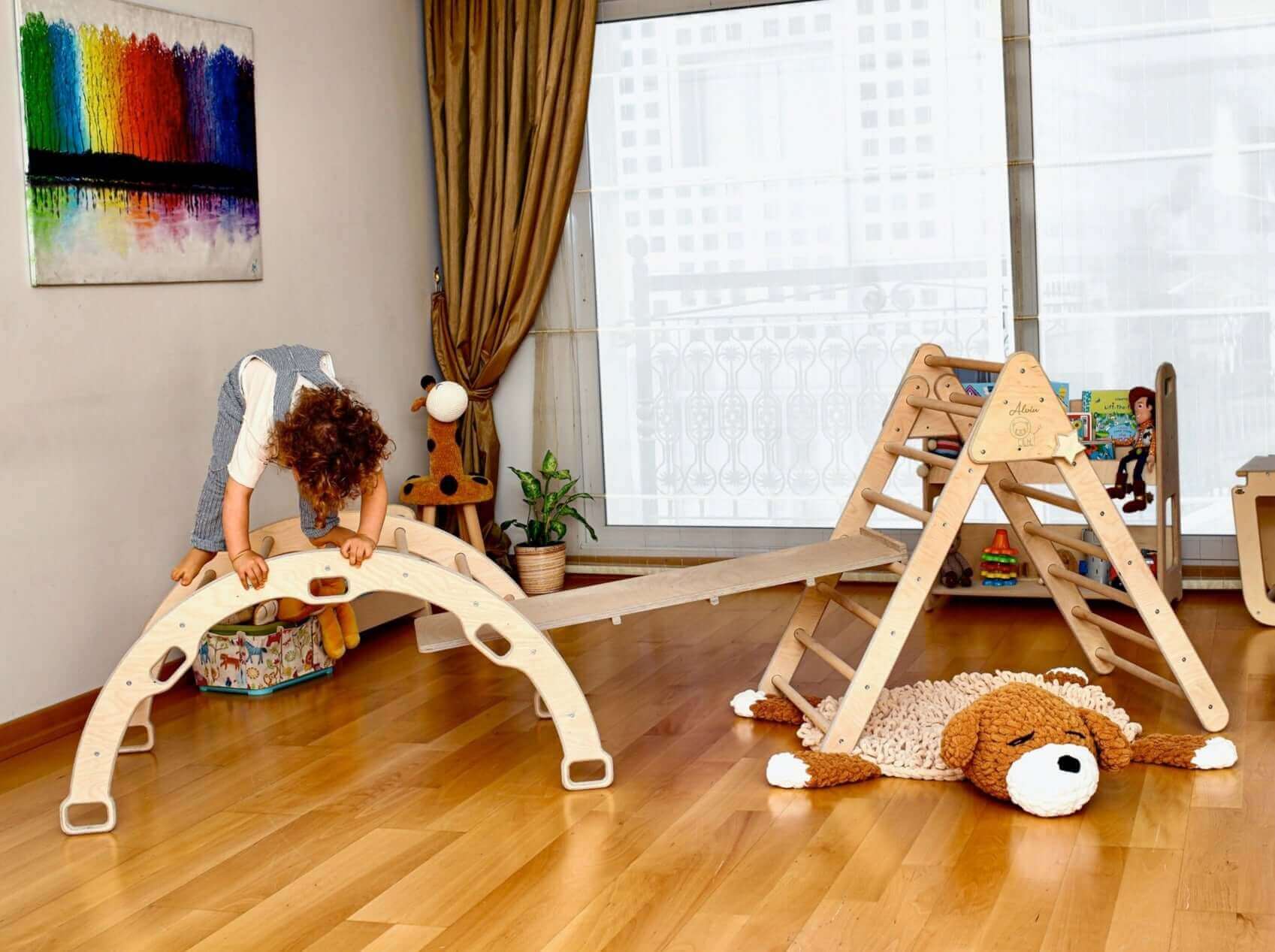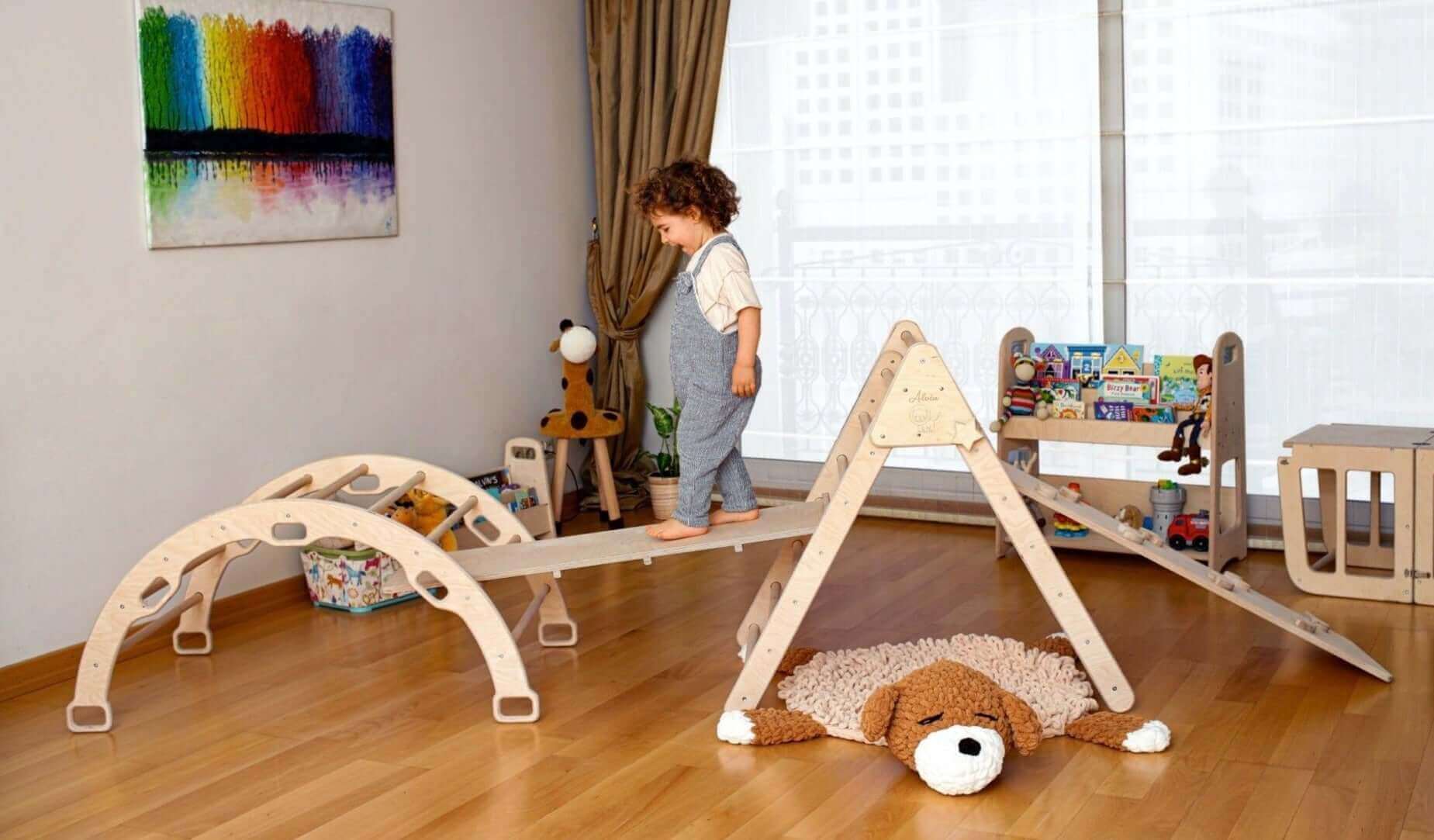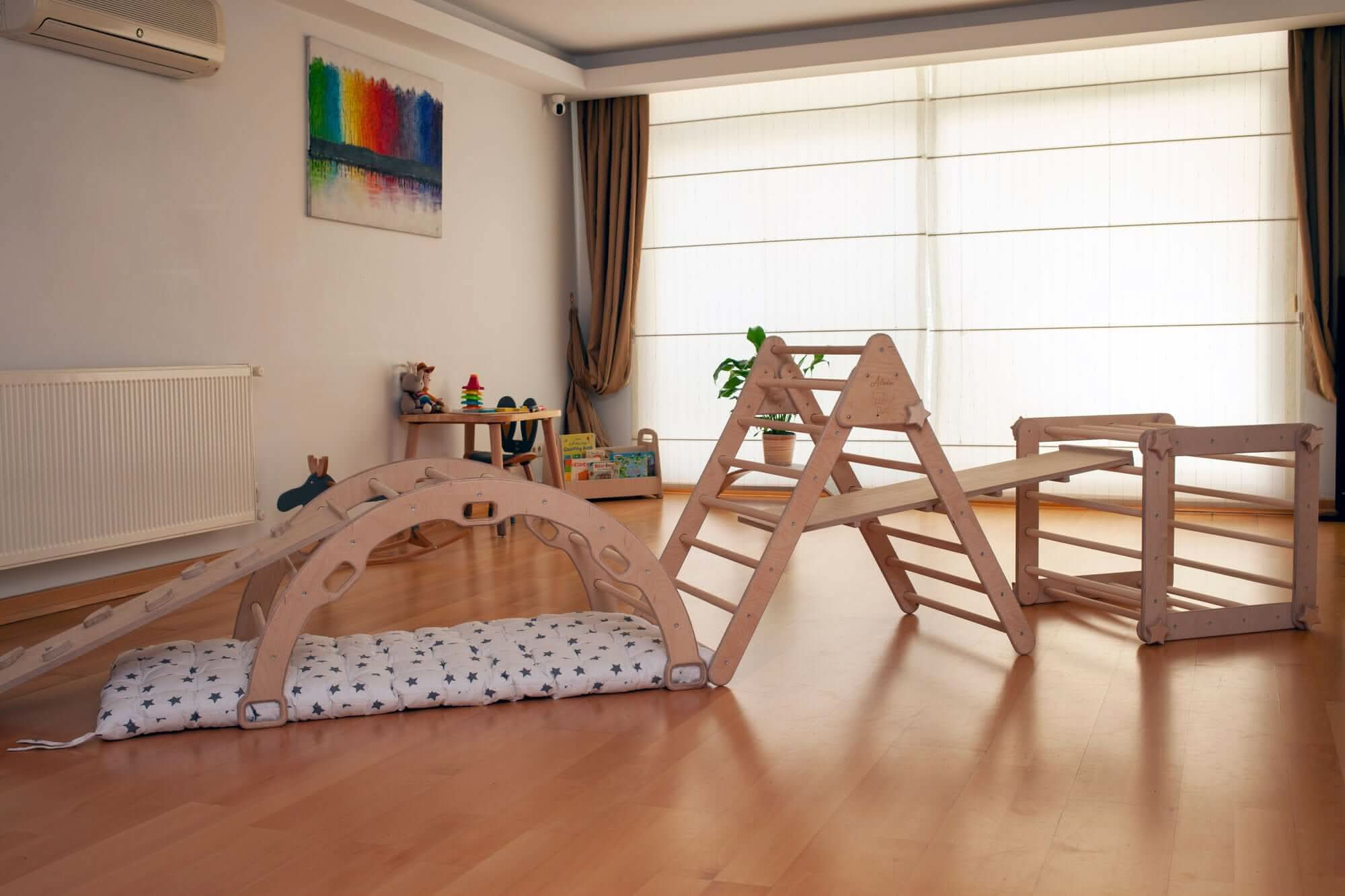
· By halit burak capraz
Ultimate Guide to Montessori Climbing Toys: Supporting Your Child's Physical Development
Introduction
Welcome to the world of Montessori climbing toys, where your child's physical development takes a flight as fun meets education. These innovative play structures not only fuel curiosity but also bolster motor skills and confidence in young adventurers. Whether you’re familiar with Montessori principles or just beginning your journey into this captivating educational philosophy, understanding the value of these toys is crucial for fostering a child's growth.
The beauty of Montessori climbing toys lies in their simplicity and purpose. Crafted from natural wood, they are designed to be safe, eco-friendly, and inviting for children of all ages. From the classic Pikler triangle to versatile toddler gym equipment, these toys are more than just indoor climbing structures for kids — they're gateways to imagination and creativity.
The Importance of Physical Activity
- Promotes Gross Motor Skills: Climbing helps children develop essential muscle groups, balance, and coordination.
- Encourages Independence: Montessori climbing structures encourage toddlers to explore at their own pace, building self-confidence.
- Sensory Development: Engaging with different textures, heights, and angles stimulates sensory experiences crucial for early development.
A study published in the Journal of Physical Activity and Health highlights that children who engage in regular physical activities like climbing exercises demonstrate improved cognitive performance (Source: Journal of Physical Activity and Health). So while your little one is busy conquering their miniature mountain at home, they're also gearing up for better learning outcomes!
If you're considering adding a touch of adventure to your child's playroom or bedroom without sacrificing safety or aesthetics, explore our range of minimalist style play structures that effortlessly blend into any decor. By choosing open-ended toys for toddlers like the ones we offer at Kidodido LLC, you provide opportunities for unstructured play where creativity knows no bounds.
Stay tuned as we delve deeper into specific types of Montessori play equipment throughout this guide. Prepare to transform your home into an enriching children's indoor playground where every day is an exciting quest!
What Are Montessori Climbing Toys?
Montessori climbing toys are a delightful blend of education and play, specifically designed to foster your child's physical development while igniting their imagination. These toys, inspired by the Montessori philosophy, focus on natural and intuitive learning mechanisms that promote exploration and self-discovery. The intriguing structures of these toys invite children to climb, balance, and navigate their way through various configurations, enhancing both their gross motor skills and cognitive abilities.
The Essence of Montessori Philosophy in Climbing Toys
Central to the Montessori method is the belief that children learn best in an environment that encourages freedom, independence, and respect for a child’s natural psychological development. Climbing toys embody this philosophy by offering open-ended play opportunities that are child-led rather than adult-directed. Whether it's a balance beam set, a Pikler triangle, or toddler gyms, these are not merely tools for play; they’re instrumental in developing crucial life skills.
- Gross Motor Development: Climbing activities build strength, coordination, and agility—fundamental components of physical growth.
- Cognitive Growth: Navigating different climbing structures fosters problem-solving skills and spatial awareness.
- Sensory Stimulation: Engaging multiple senses aids in the overall brain development of children.
- Confidence Boosting: Mastering challenges like climbing to new heights enhances self-esteem and independence.
Diverse Types of Montessori Climbing Toys
The spectrum of Montessori climbing toys is vast yet distinctively united by their focus on natural materials and open-ended design. Here's what you can expect:
- **Pikler Triangles:** A classic choice that allows toddlers to explore at their own pace. These triangles can be folded away for easy storage when not in use. - **Balance Boards:** An excellent tool for improving balance and core strength. - **Indoor Play Structures:** Perfect for transforming any room into an adventure playground without stepping out. - **Eco-Friendly Wooden Climbers:** Made from sustainable materials, these climbers align with the commitment to environmentally conscious parenting.Apart from being fun (and let's be honest—also giving parents a few moments of peace), these toys offer profound developmental benefits. They provide children with an interactive experience where they learn by doing—the cornerstone of effective learning through play.
A Peek Into Their Popularity
In recent years, there's been an upsurge in interest surrounding Montessori-inspired climbing equipment due to its numerous benefits. According to research published by the Journal of Early Childhood Research (source link unavailable), these types of active play tools contribute significantly to early childhood development benchmarks. This makes them a thoughtful addition to any child's growth journey.
A sneak peek: if your little one is scaling household furniture like Spider-Man on caffeine—it's probably time for some dedicated children's indoor playgrounds!
Benefits of Montessori Climbing Toys for Physical Development
If you've ever marveled at a toddler's uncanny ability to scale furniture like a seasoned mountaineer, you're not alone. It turns out, their instincts are spot-on when it comes to physical development. Enter Montessori climbing toys, the perfect partners in fostering your child's gross motor skills and more.
Building Gross Motor Skills
Montessori climbing toys are meticulously designed to enhance your child’s gross motor skills. By engaging muscles in the arms, legs, and core, children develop strength and coordination while having a blast. It's like sneaking vegetables into spaghetti sauce—only instead of nutrition, it's development they’re soaking up.
- Balance and Coordination: A balance board for kids can turn a living room into an adventure park, teaching them how to distribute body weight and maintain equilibrium.
- Spatial Awareness: Understanding space is crucial for safe navigation of their environment. As children climb and descend structures like the Pikler triangle or natural wood climbing toys, they gain invaluable spatial awareness.
Encouraging Independence
The design philosophy behind Montessori play equipment is deeply rooted in encouraging independence. With options such as foldable Pikler triangles or adjustable lounge chairs with comfy pads—a cozy retreat after a climbing session (check out our full range of comfy lounge chairs here)—children learn self-reliance by engaging freely in activities without constant adult intervention.
Safe Exploration
Safety doesn’t take a backseat with these thoughtfully crafted toys. Made from eco-friendly materials, Montessori-inspired toddler gym equipment provides safe avenues for exploration. As parents, we can finally unclench slightly while our little explorers conquer new heights—figuratively and literally!
"Play is essential to development because it contributes to the cognitive, physical, social, and emotional well-being of children." — Harvard Health Blog
The benefits extend beyond the physical realm too. As noted by experts, activities that encourage physical play significantly contribute to cognitive development (Harvard Health). So next time you see your child scaling their favorite piece of Montessori climbing structure, rest assured they're not just playing—they're learning and growing!
Explore our balance beam set here, perfect for developing those nimble little feet!
Types of Montessori Climbing Toys
When it comes to nurturing your child's physical development, Montessori climbing toys offer a splendid variety of options. These toys are designed not only to encourage physical activity but also to stimulate cognitive growth through play. Below, we explore some of the most popular types of Montessori climbing toys that can transform your home into an adventure-filled learning environment.
The Pikler Triangle
Named after Hungarian pediatrician Dr. Emmi Pikler, this triangular climbing frame is a staple in Montessori households. The Pikler triangle allows toddlers to climb, balance, and experiment with different movements at their own pace. It's versatile and durable, often paired with ramps for added fun and challenge.
Balance Beams
A perfect tool for enhancing gross motor skills, balance beams provide a safe and engaging way for children to practice coordination. Whether your child is pretending they're walking a tightrope or simply testing their balance, these beams are a fantastic addition to any indoor play area.
Nesting Climbers
Nesting climbers are like the Russian dolls of the climbing world—compact yet incredibly fun! These stackable pieces can be arranged in various configurations to suit your child’s imagination and skill level, making them ideal for fostering creativity along with physical prowess.
Toddler Climbing Gyms
If you want to take it up a notch, consider investing in an indoor climbing gym that combines multiple elements such as ladders, slides, and ropes. These toddler gym equipment setups not only burn pent-up energy but also enhance problem-solving skills as children figure out how best to navigate the structures.
Waldorf Climbing Toys
A close relative of Montessori toys, Waldorf climbing toys often emphasize natural materials and simplistic design. They encourage open-ended play—a concept where the child's imagination dictates how the toy should be used rather than predetermined instructions.
Choosing the Right Toy for Your Child
- Age Appropriateness: Always select toys suited to your child’s developmental stage.
- Space Considerations: Opt for foldable or compact models if space is limited.
- Sustainability: Eco-friendly materials like natural wood are both safe and sustainable choices for mindful parents.
The world of Montessori climbing toys offers endless possibilities for both fun and learning. By selecting the right equipment, you’re not just installing play structures; you're building the foundation of your child's future adventures!
Selecting Safe and Eco-friendly Climbing Toys
When it comes to choosing Montessori climbing toys, safety and sustainability are two key priorities for many parents. After all, no one wants their child to embark on an indoor adventure only to discover that their play structure has more in common with a wobbly house of cards than a sturdy mountain! Fear not, as we guide you through the essentials of selecting the perfect climbing toys that are kind to both your child and the planet.
Safety First: A Non-negotiable Priority
- Sturdy Construction: Ensure that the climbing toys are made of robust materials like solid wood or high-quality steel. They should be able to withstand the energetic play of active toddlers without faltering.
- Smooth Edges: Look for items with rounded corners and smooth surfaces to prevent any accidental bumps or scrapes during playtime. A toy that doubles as a splinter dispenser is definitely not on your wishlist!
- Non-toxic Finishes: Verify that the paints and finishes used on these toys are free from harmful chemicals. This is especially crucial given toddlers' knack for exploring with their mouths.
- Weight Capacity: Ensure the toy can support your child’s weight safely, factoring in any potential growth spurts during its usage period.
Sustainability: Play Today, Protect Tomorrow
- Naturally Sourced Materials: Opt for climbing toys crafted from natural, renewable resources such as sustainably harvested wood. This choice helps reduce environmental impact while maintaining durability.
- Eco-friendly Manufacturing Processes: Support brands that prioritize green practices in their production process, reducing emissions and waste.
- Longevity over Landfill: Select versatile designs like adjustable or grow-with-me options, which offer extended usability as your child develops new skills open-ended that keep them engaged longer without needing constant replacements.
The journey of selecting safe and eco-friendly climbing toys is not just about finding playthings; it's about nurturing an environment where children can climb safely while sowing seeds for sustainable living. As you explore options for Montessori play equipment, remember: each step taken towards safer toys is a giant leap towards a better future for our children—and our planet.
If you're curious about other factors to consider when selecting durable children's furniture, you might find our post on the Top 7 Features to Look for in a Durable Folding Learning Tower helpful!
Integrating Montessori Climbing Toys into Your Home Environment
Bringing Montessori climbing toys into your home may sound like a venture that requires an interior design degree, but fear not! It's more about creating an environment that fosters exploration and growth for your child. These toys are not just playthings; they're gateways to developing gross motor skills, balance, and coordination.
1. Designate a Safe Play Area
First things first, safety is paramount. Choose a space that is free from potential hazards. Whether it's in a corner of the living room or a dedicated playroom, ensure that the area has soft flooring or add plush rugs to cushion any tumbles. A well-lit area also helps keep an eye on those daring toddler adventurers!
2. Choose the Right Equipment
Selecting the right climbing toys can make all the difference. Consider options like the versatile balance beam set, which encourages balance and coordination while being compact enough for smaller spaces. For more adventurous spirits, a foldable Pikler triangle or a minimalist-style climbing frame can transform any room into an engaging playground.
3. Create an Inviting Atmosphere
Embrace natural elements by incorporating Montessori and Waldorf-inspired materials. Wooden climbing toys not only blend seamlessly with most home décors but are eco-friendly too! Add some indoor plants to bring life into the play space—just make sure they're non-toxic varieties.
- Pikler Triangle: This classic choice grows with your child, allowing for varied play as they develop new skills.
- Balance Board: Perfect for testing balance and enhancing core strength.
- Toddler Gym Equipment: Different structures like climbers with slides can add complexity and excitement.
4. Encourage Open-Ended Play
The beauty of integrating these toys lies in their open-ended nature. Let your child's imagination run wild as they find new uses for their climbing structures—from forts to castles! Remember, learning through play is at the core of Montessori philosophy, encouraging creativity and problem-solving skills.
"Play gives children a chance to practice what they are learning." - Fred Rogers
5. Rotate Toys Regularly
Avoid clutter by rotating different types of toys periodically. This keeps the environment fresh and stimulating without overwhelming your child—or you with clean-up duties! Plus, it reignites interest in previously forgotten items.
Incorporating these climbing toys into your home doesn't have to be complicated or costly—it’s truly about creating an inspiring environment where children feel safe to explore and learn at their own pace. So go ahead, let those little explorers climb their way to new skills!
Nurturing Development Through Active Play
In an age where children are often glued to the screens of tablets and smartphones, encouraging active play is more crucial than ever. Montessori climbing toys are not just about having fun; they play a pivotal role in nurturing your child's physical and cognitive development through dynamic, interactive play.
The Role of Montessori Climbing Toys in Child Development
Montessori climbing toys are designed with the understanding that children learn best through movement. These toys aid in developing gross motor skills, which are essential for tasks like jumping, running, and climbing. According to a study published by the National Center for Biotechnology Information, engaging in active play can significantly improve motor skills and physical fitness in young children.
- Gross Motor Skills: Activities such as climbing a Pikler triangle or navigating a balance board require coordination between arms, legs, and the core. This enhances balance, agility, and strength.
- Problem Solving: As children figure out how to climb up and down a wooden climbing toy or a toddler activity climber without assistance, they develop critical problem-solving skills.
- Sensory Stimulation: Climbing toys offer various textures and forms that provide sensory input. This can be especially beneficial for children with sensory processing needs.
Balancing Safety and Adventure
While adventure is key to stimulating development, safety remains paramount. Look for features like rounded edges on wooden climbers for kids or sturdy eco-friendly materials that ensure both durability and safety. Our own range of balance beam sets, for example, are crafted with precision to provide a safe yet exciting platform for toddlers to explore their physical potential.
Apart from promoting physical development, these toys inspire creativity—transforming your living room into a castle one day and a jungle gym the next! Each climb becomes an adventure as toddlers engage in open-ended play that spurs their imagination.
Stay tuned as we delve deeper into specific types of Montessori climbing structures and how you can integrate them into your child’s daily routine to foster both growth and joy!
Conclusion: The Joy of Climbing, The Beauty of Learning
As we wrap up this journey through the world of Montessori climbing toys, it's clear that these innovative play structures are more than just a playground in your living room. They're a cornerstone in nurturing your child's physical prowess while fostering an environment for holistic development. Whether it's a balance beam set or a classic Pikler triangle, each piece of Montessori play equipment offers endless opportunities for discovery and growth.
Embracing such toys doesn't just mean investing in your child's physical health but also in their cognitive and emotional well-being. Research has shown that unstructured play, like that encouraged by open-ended toys for toddlers, significantly contributes to developing creativity and problem-solving skills [1]. Plus, seeing your toddler navigate these climbing wonders with glee adds an extra sprinkle of joy to your parenting journey.
Let's not forget the environmental aspect—a win-win for eco-conscious parents. Choosing natural wood climbing toys aligns with sustainable practices, ensuring that our little adventurers can enjoy safe and environmentally friendly products. It's all about leaving a better world for them, isn't it?
- Fosters Physical Development: Improves gross motor skills like balance and coordination.
- Cognitive Benefits: Encourages problem-solving and decision-making through exploration.
- Sustainability: Eco-friendly materials safeguard both the planet and your child's health.
- Aesthetic Appeal: Minimalist style play structures seamlessly blend into modern home decor.
If you’re looking for more engaging options to support your child’s development, explore our diverse range of Montessori-inspired products. With thoughtful design and quality craftsmanship at their core, our offerings aim to transform everyday moments into extraordinary learning experiences. As you continue this beautiful parenting adventure, remember—every climb is a step towards unlocking your child’s potential!
[1] For a deeper dive into how play influences development, check out the American Academy of Pediatrics' guidelines on the importance of play: https://pediatrics.aappublications.org/content/142/3/e20182058

